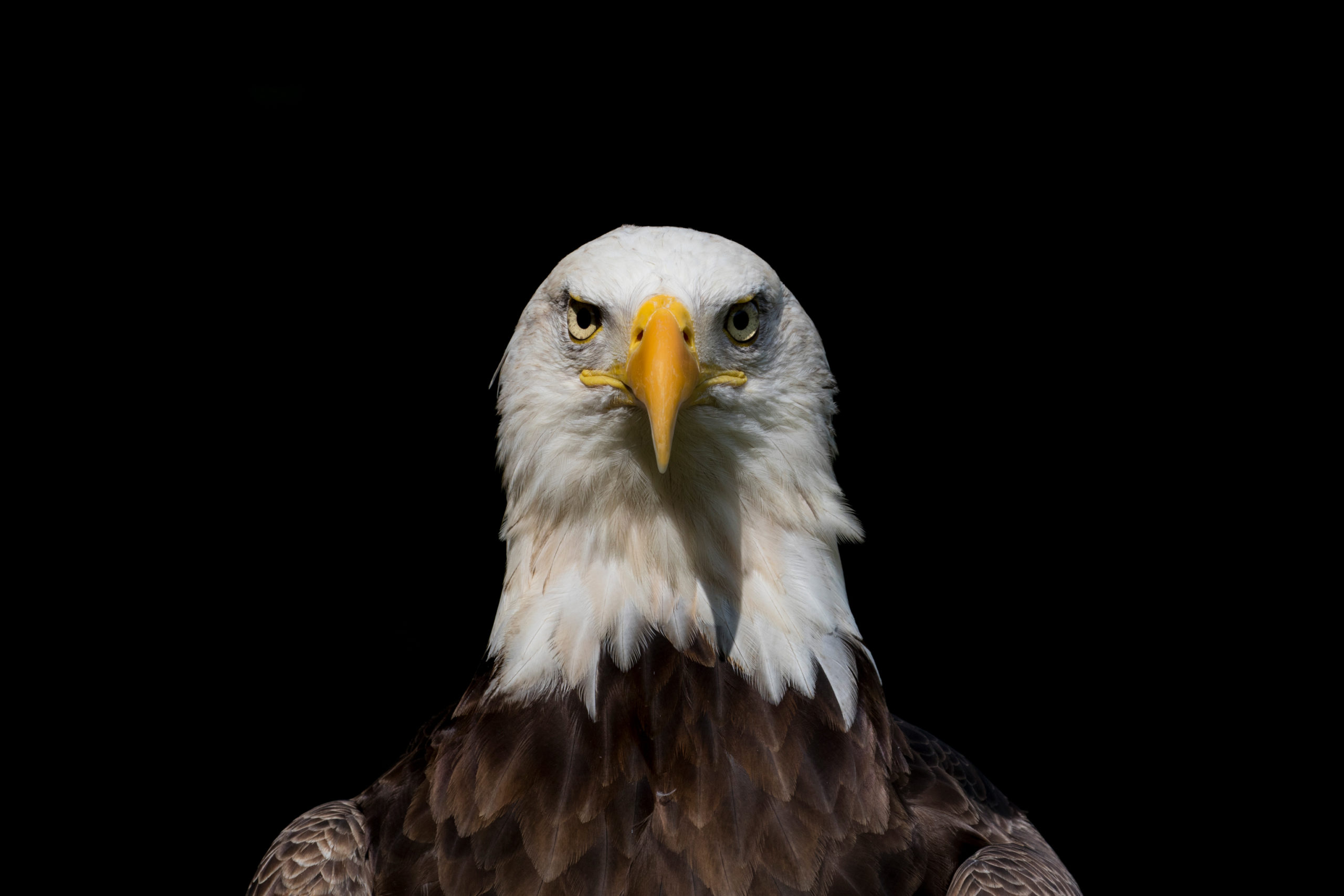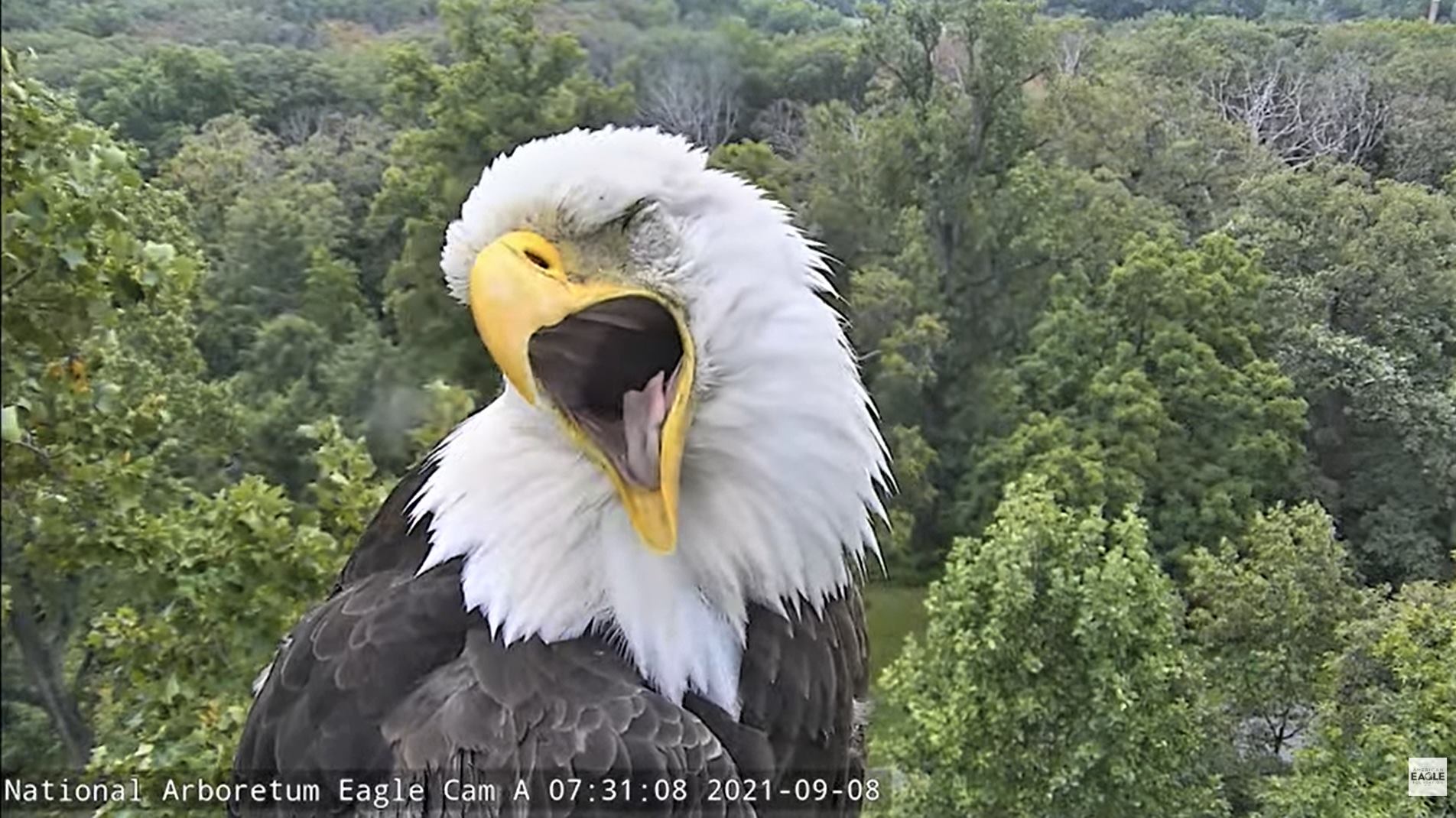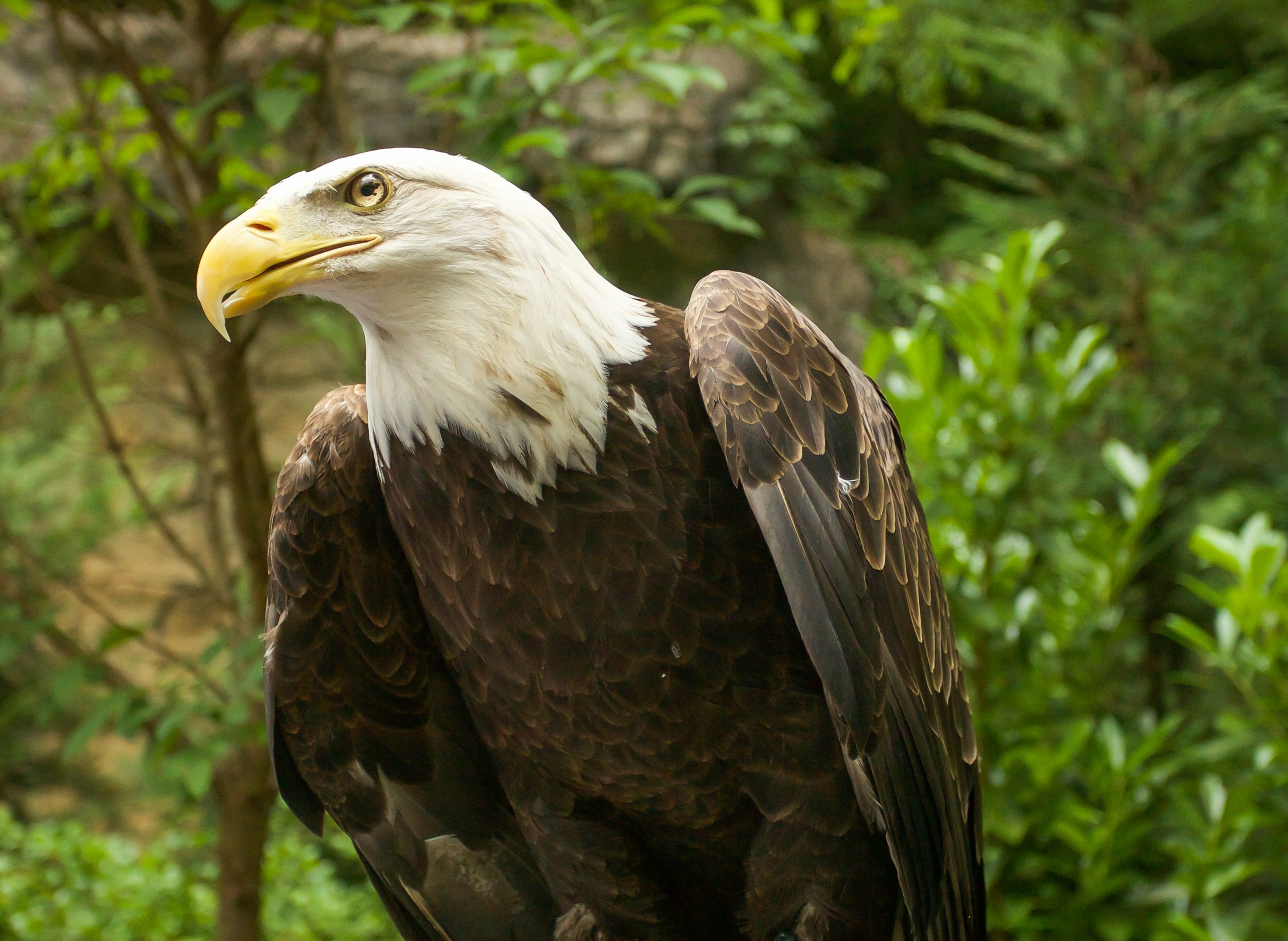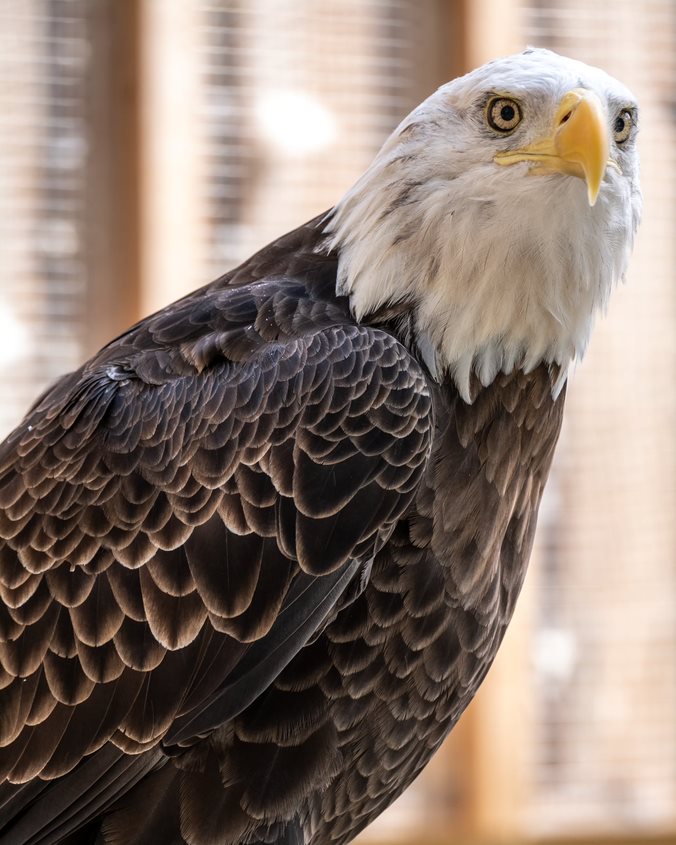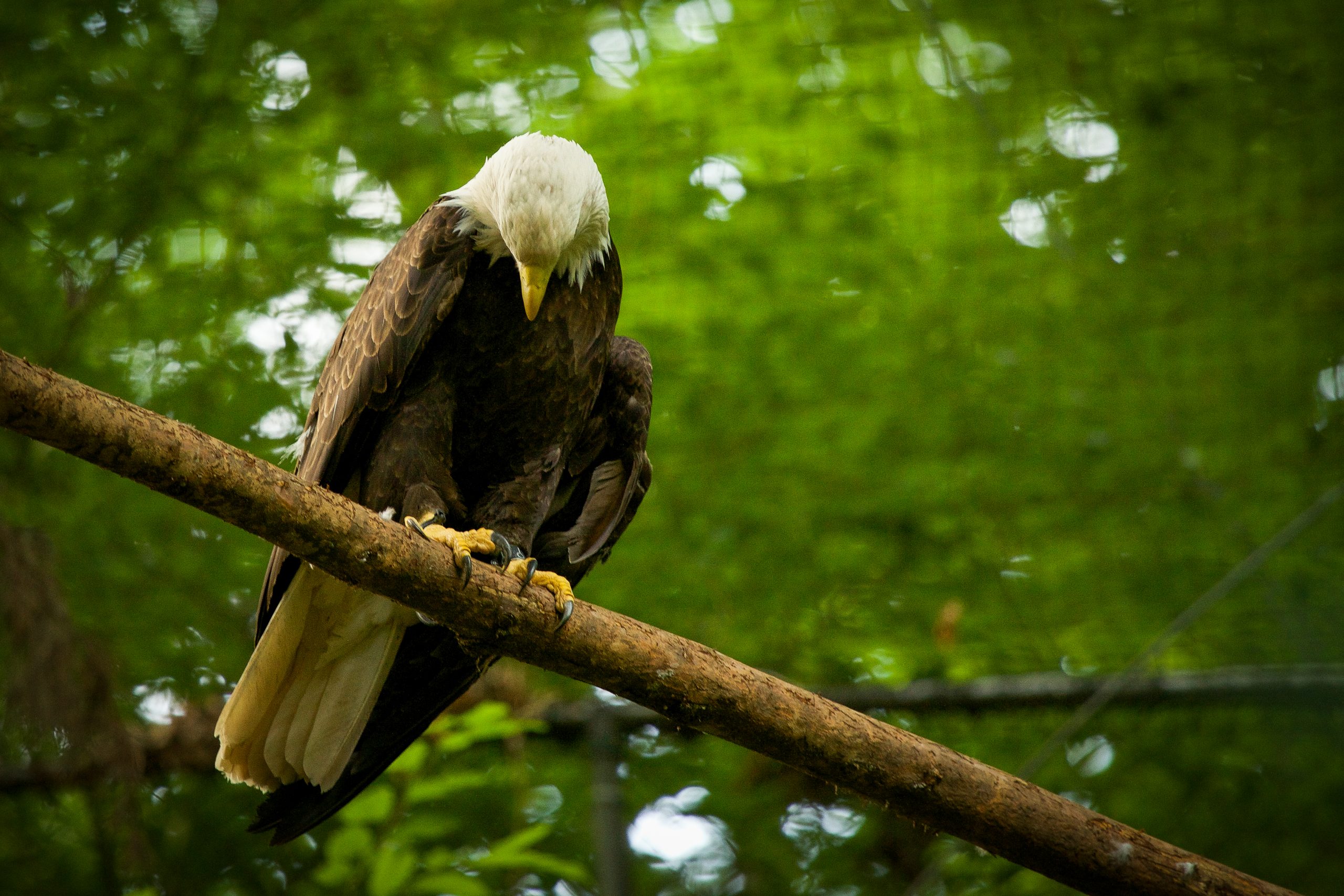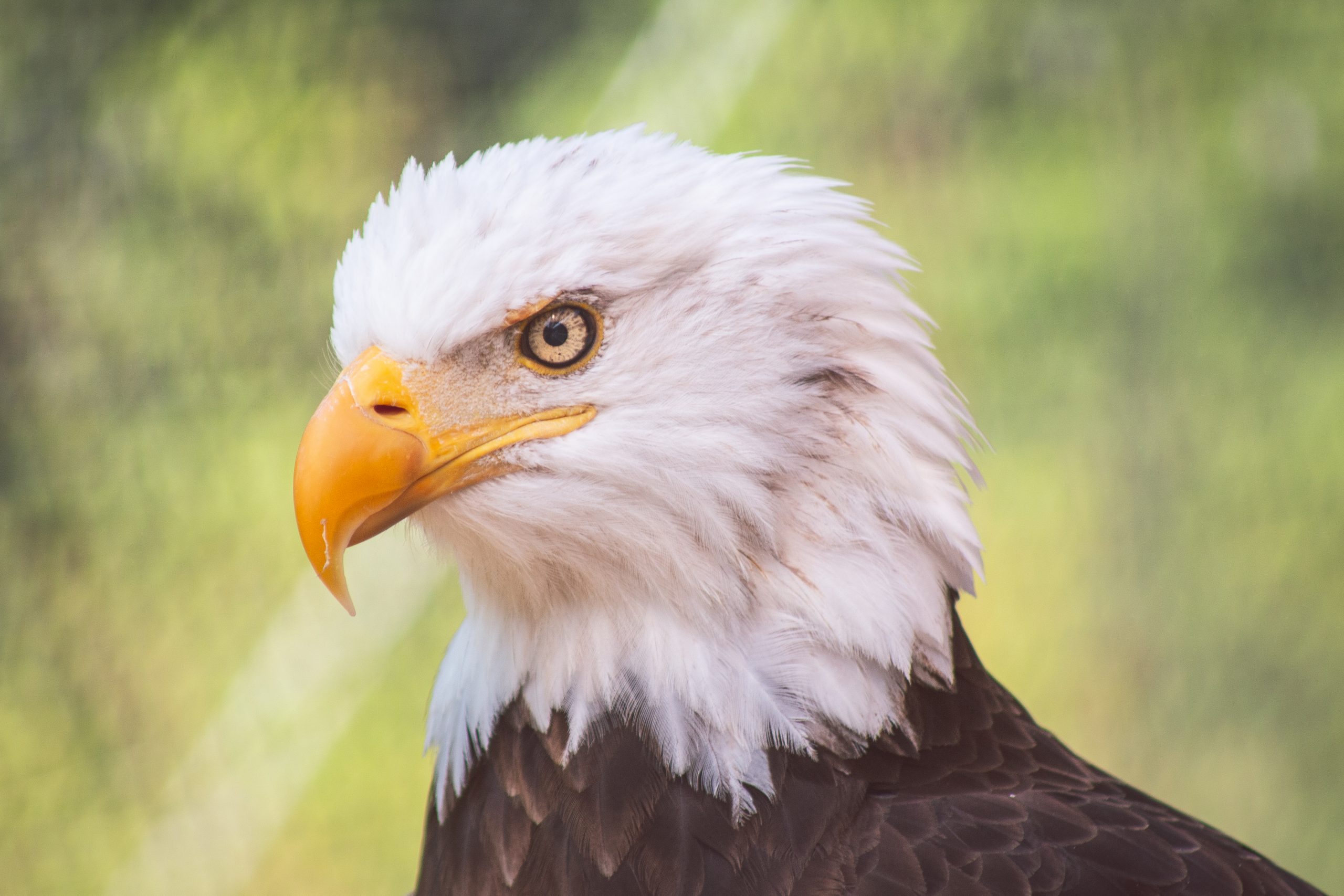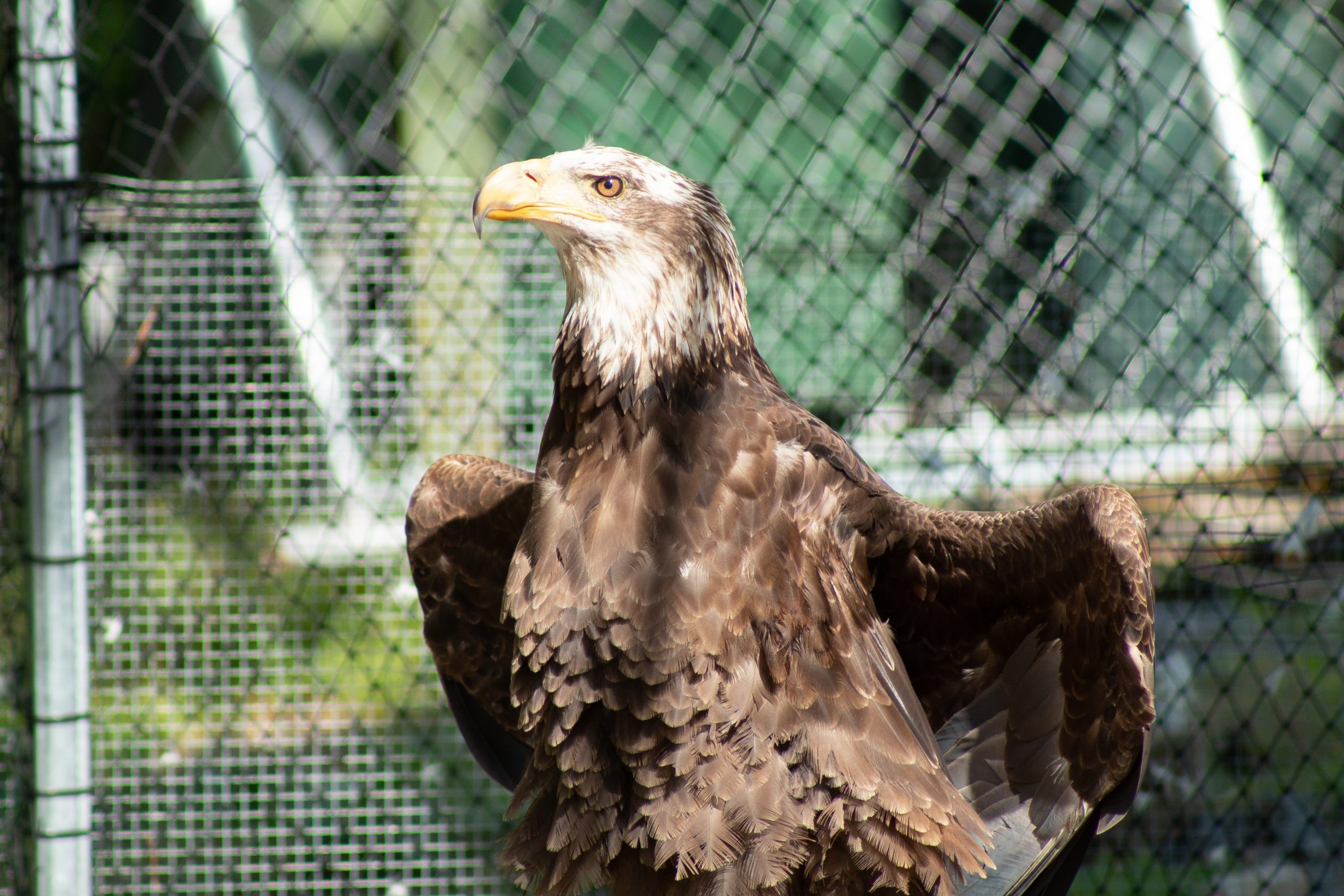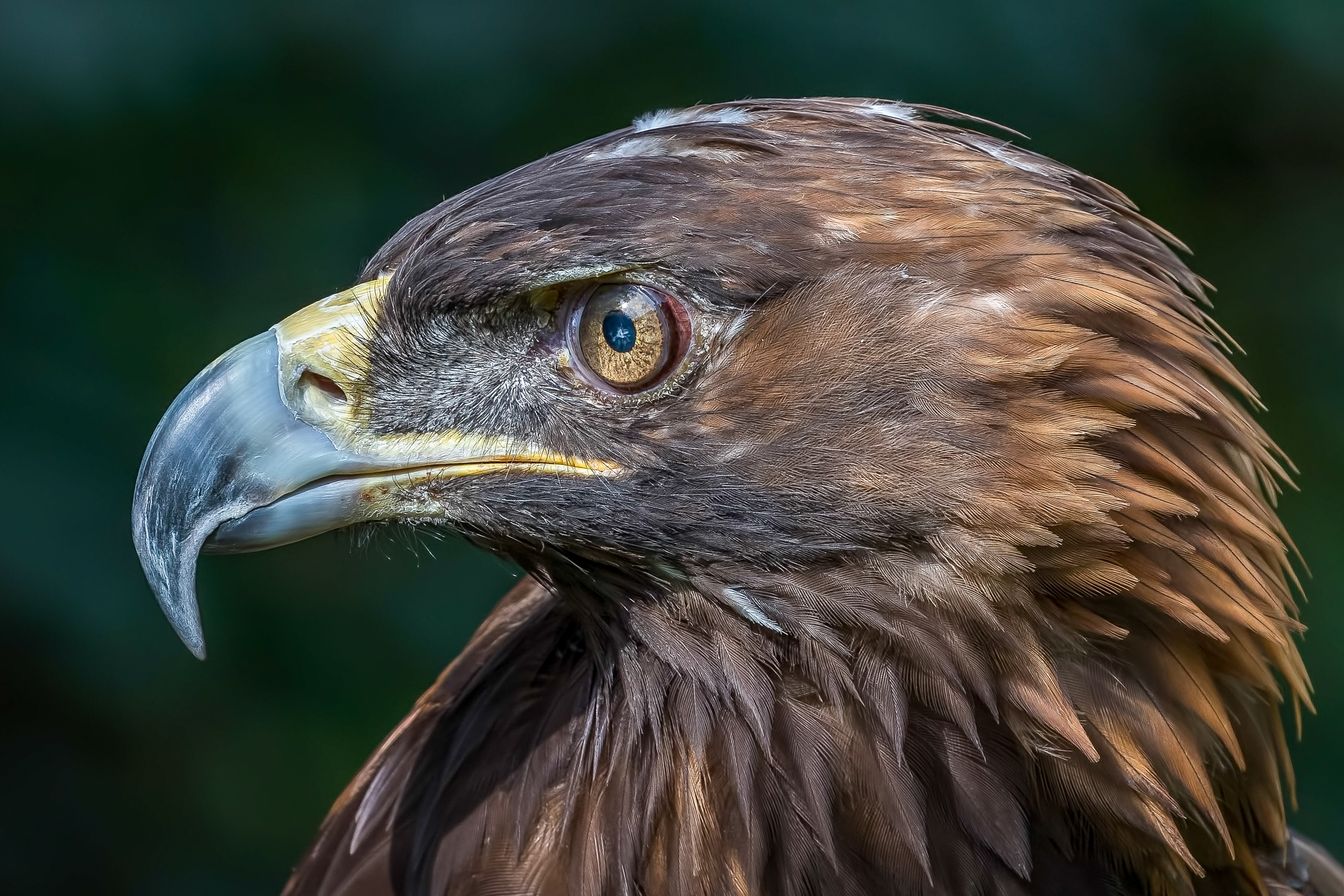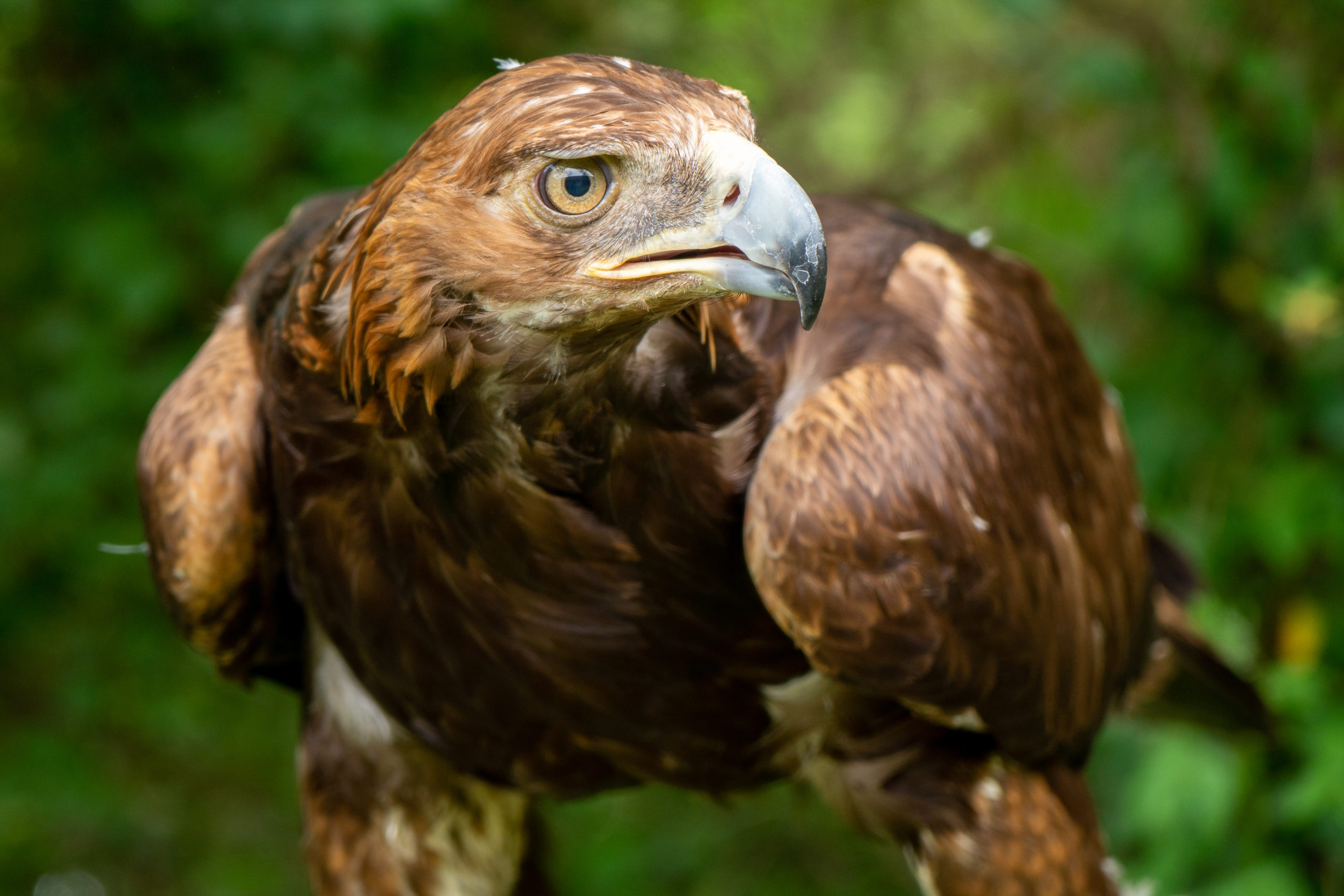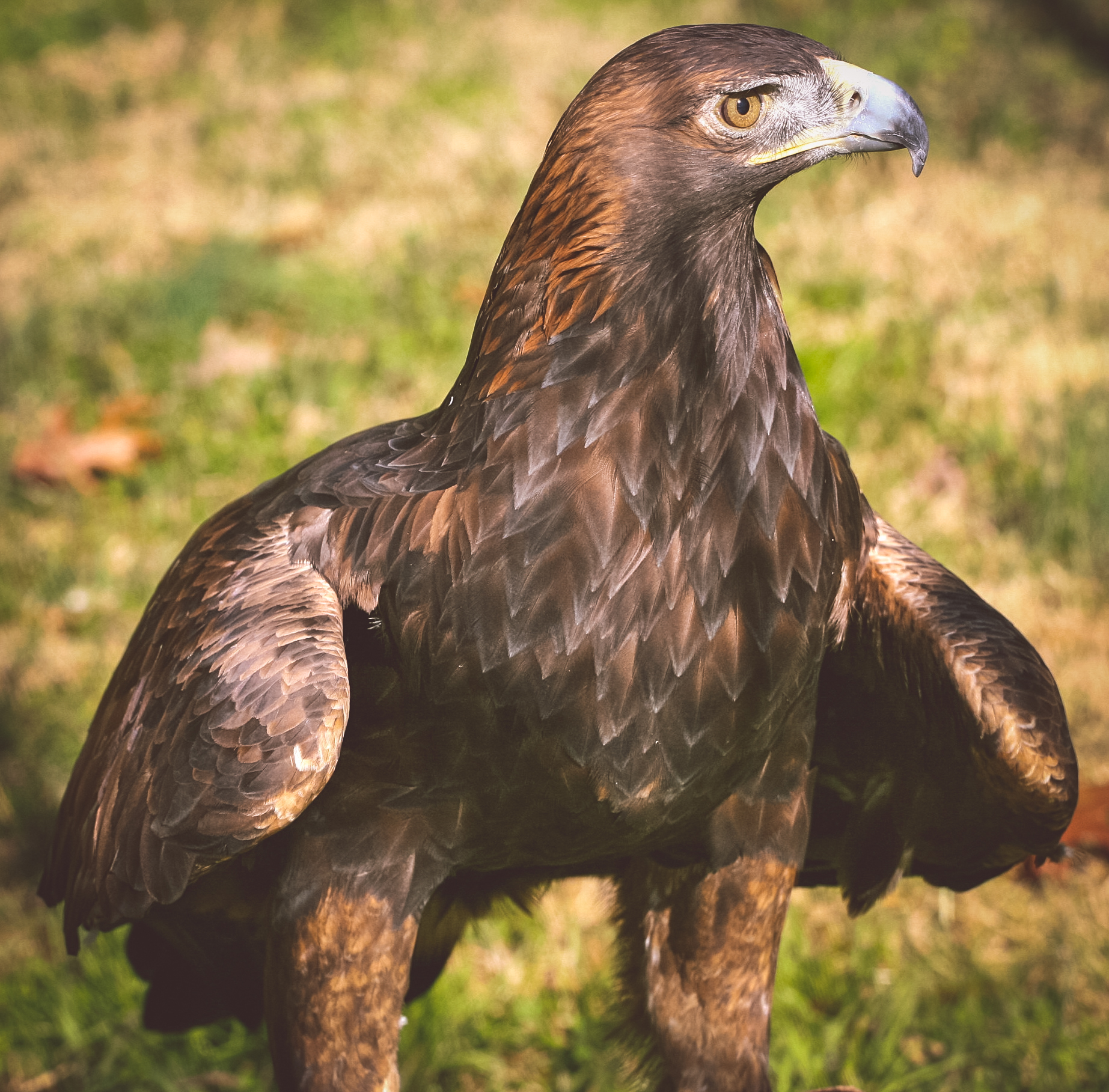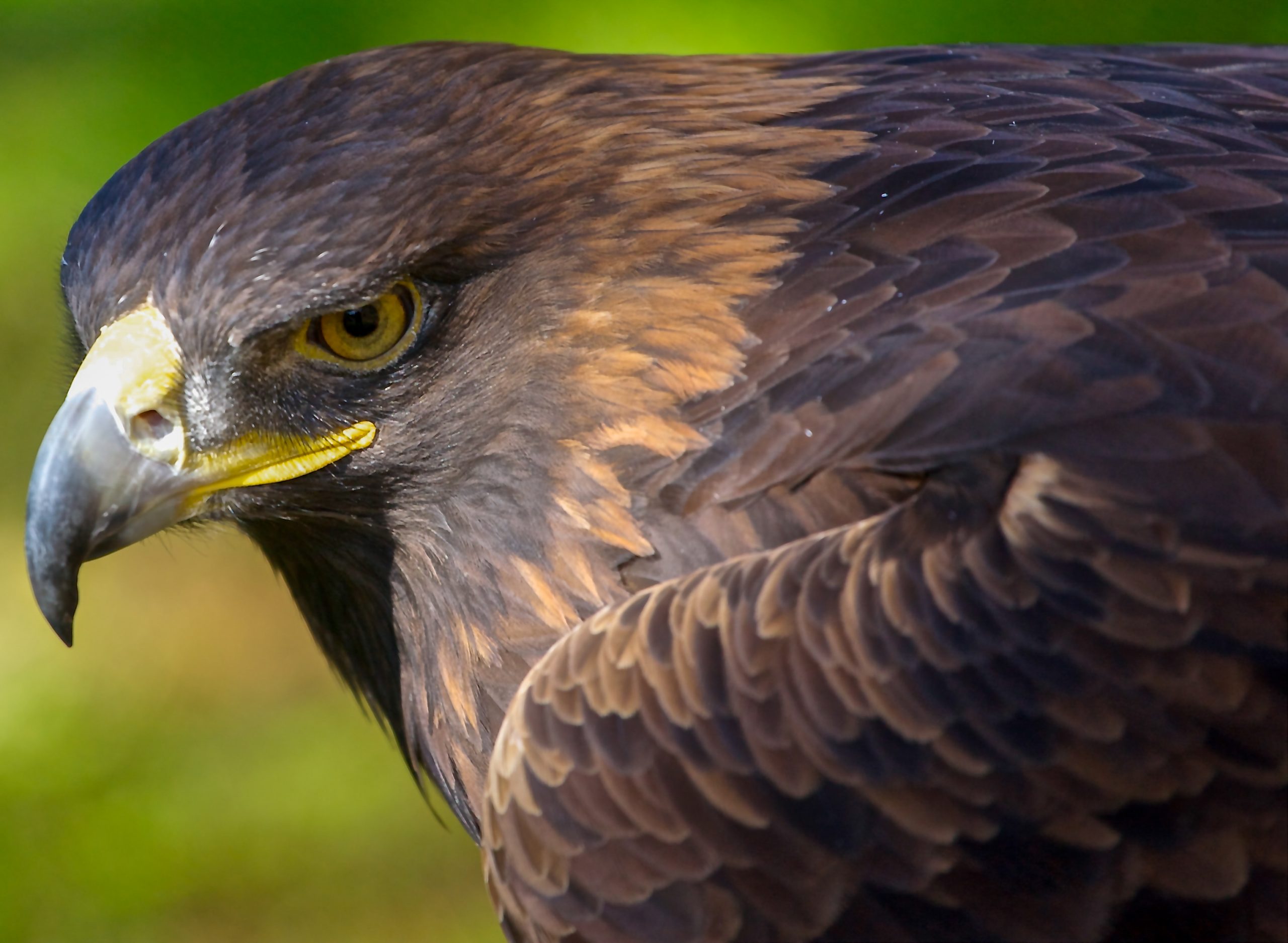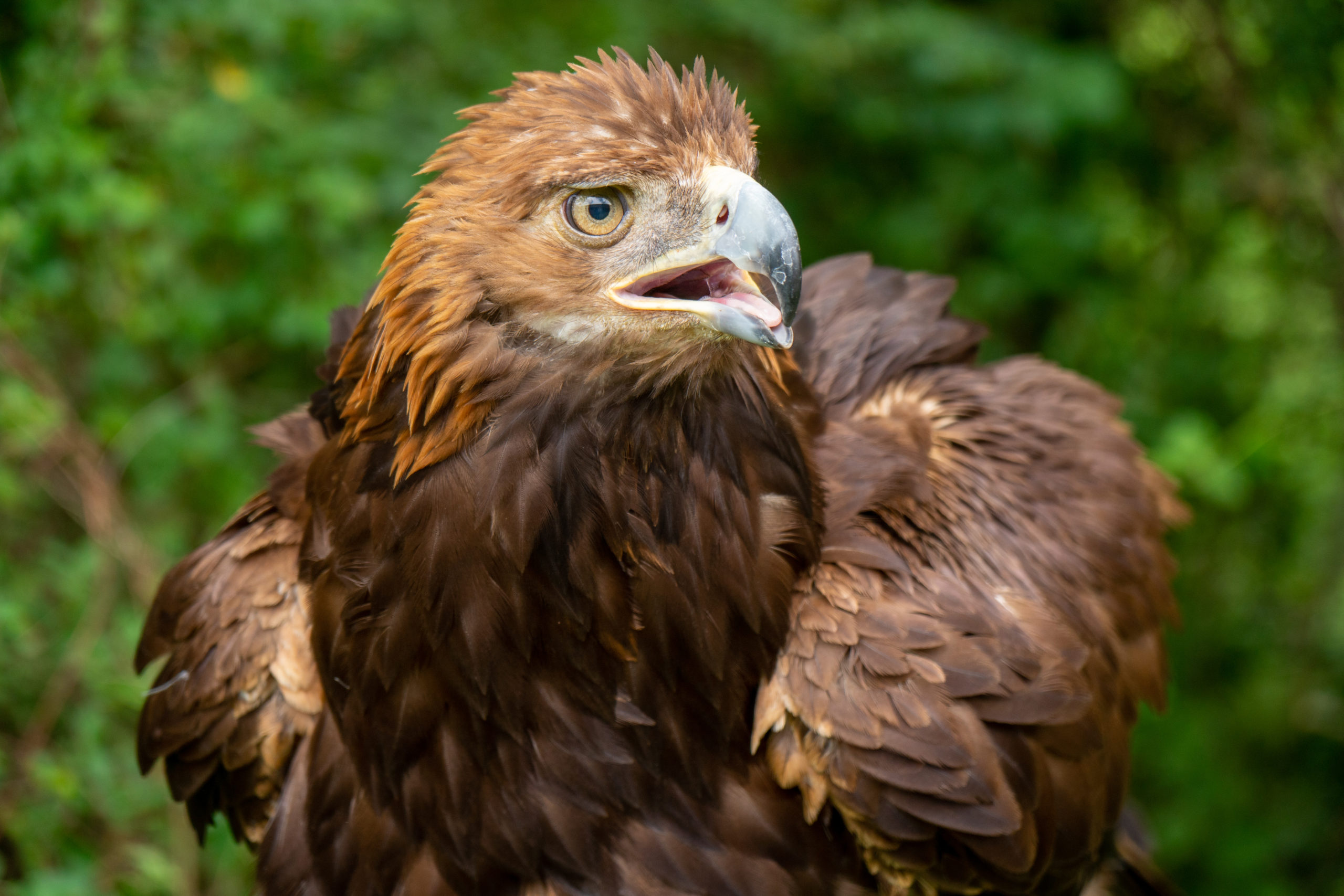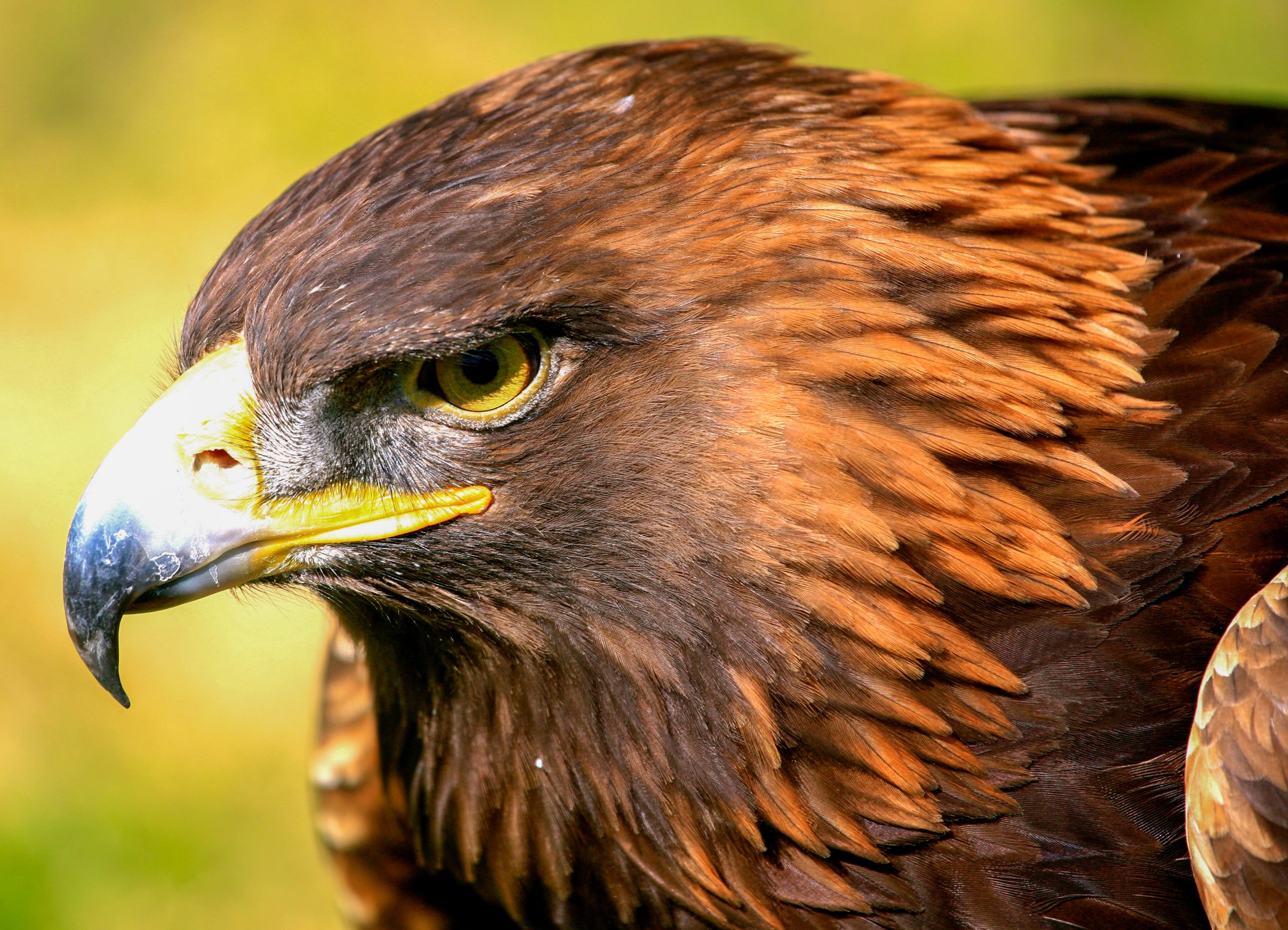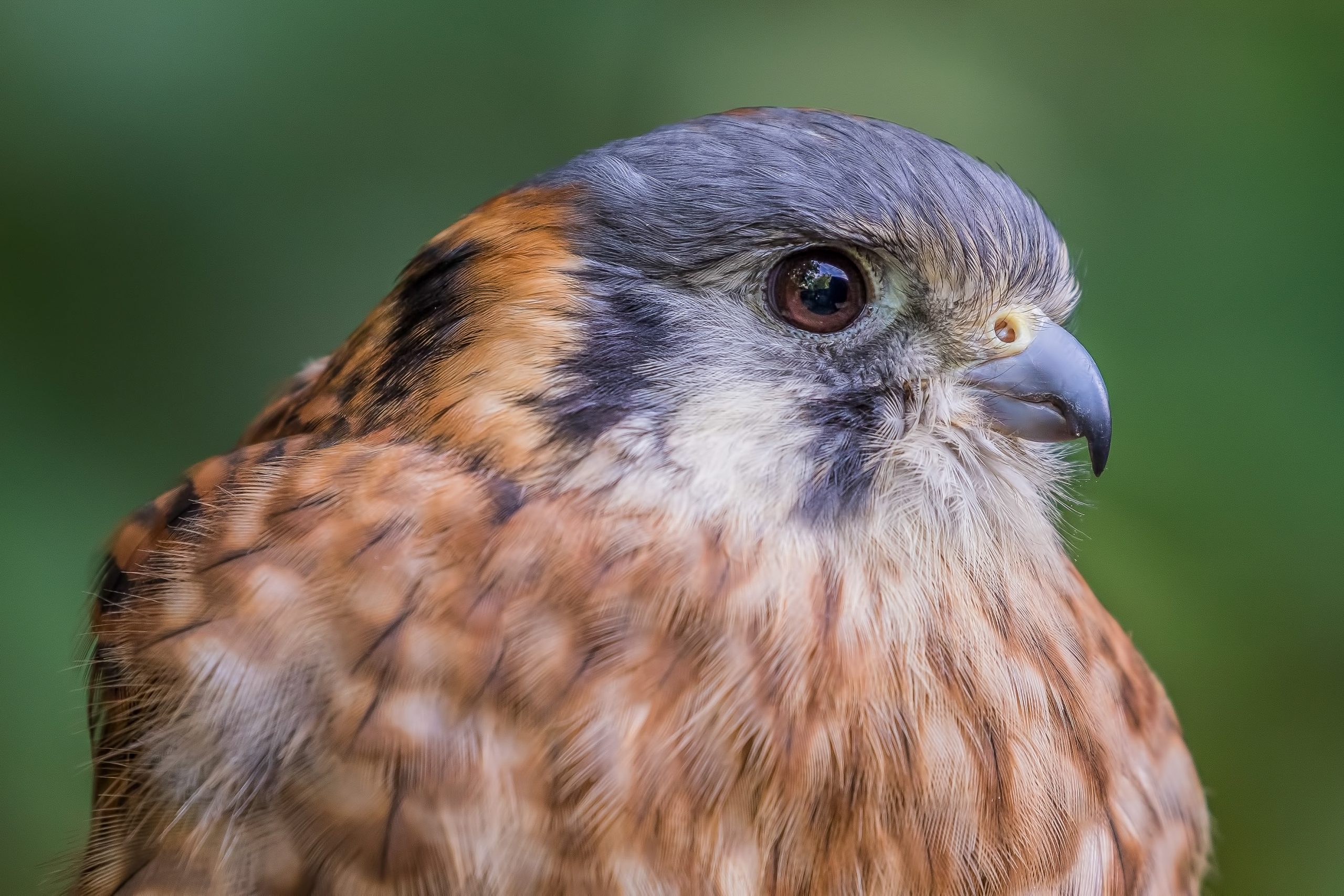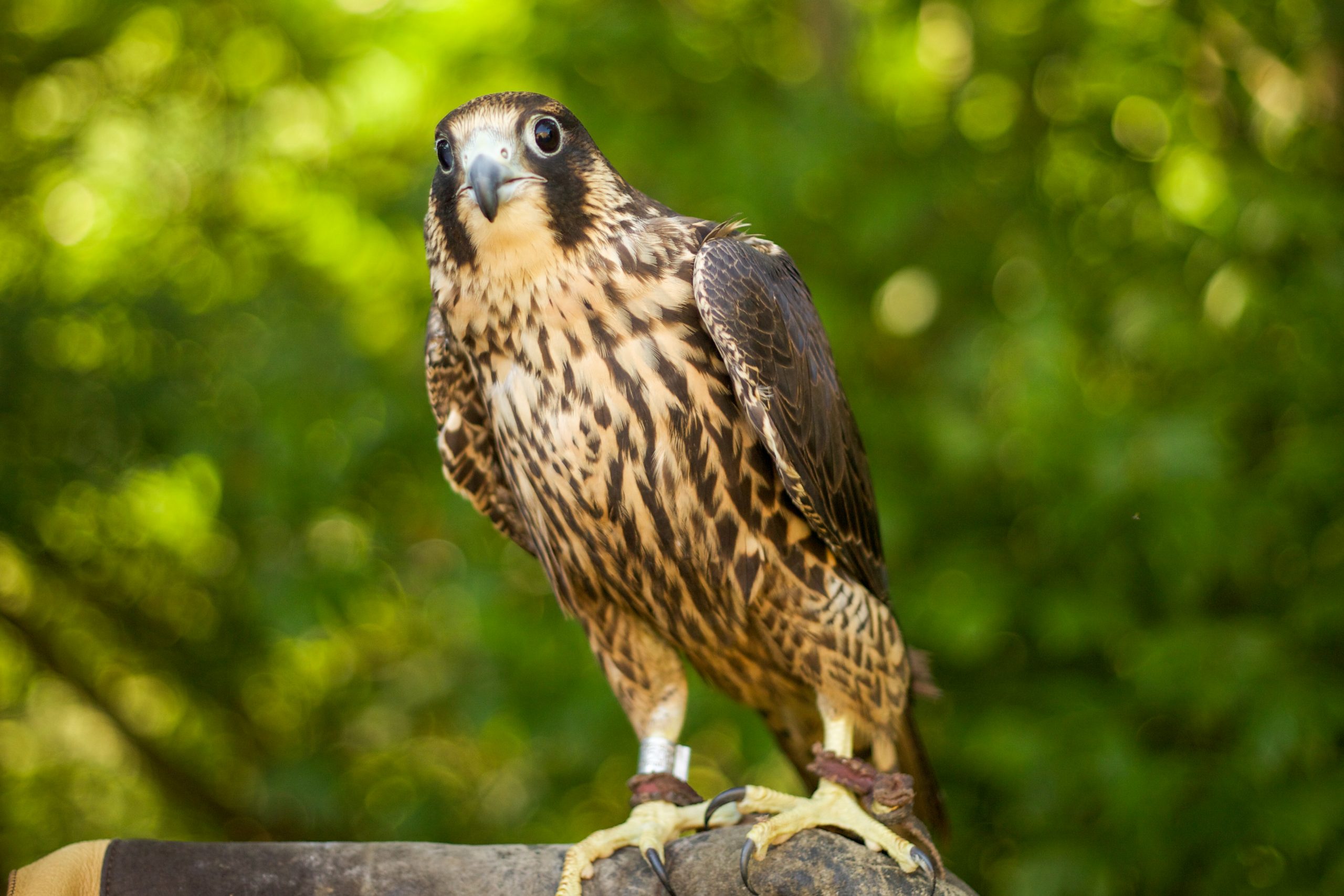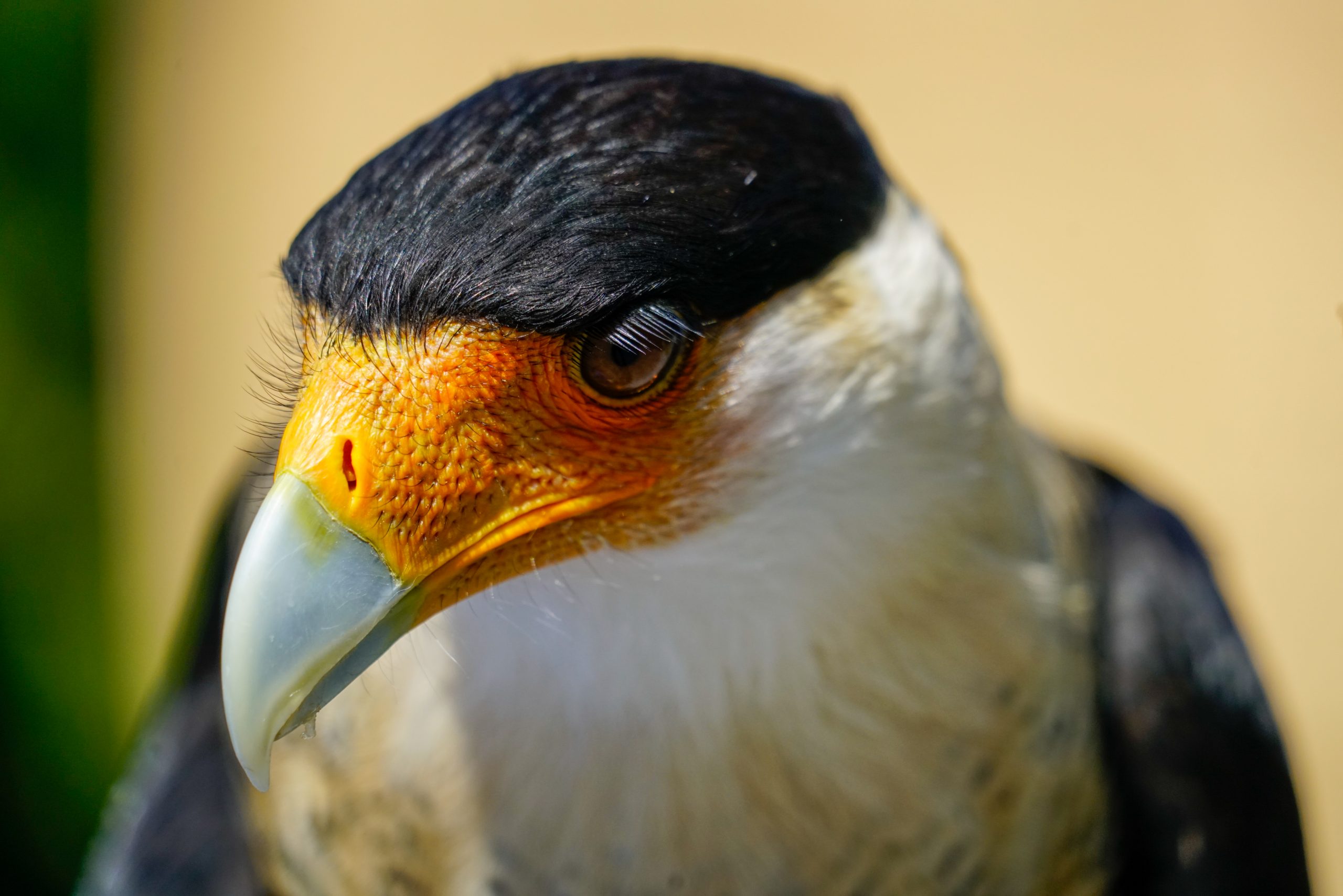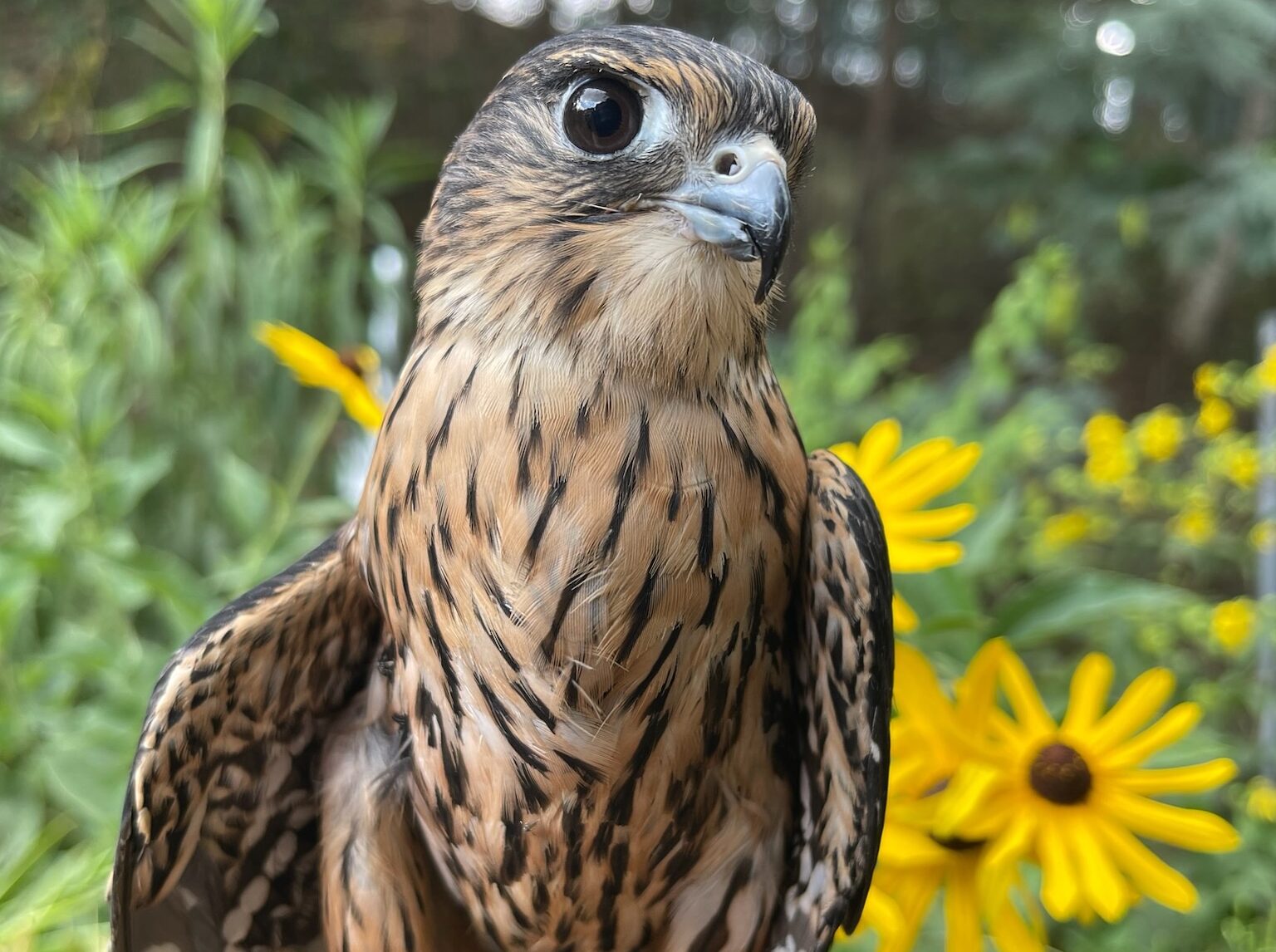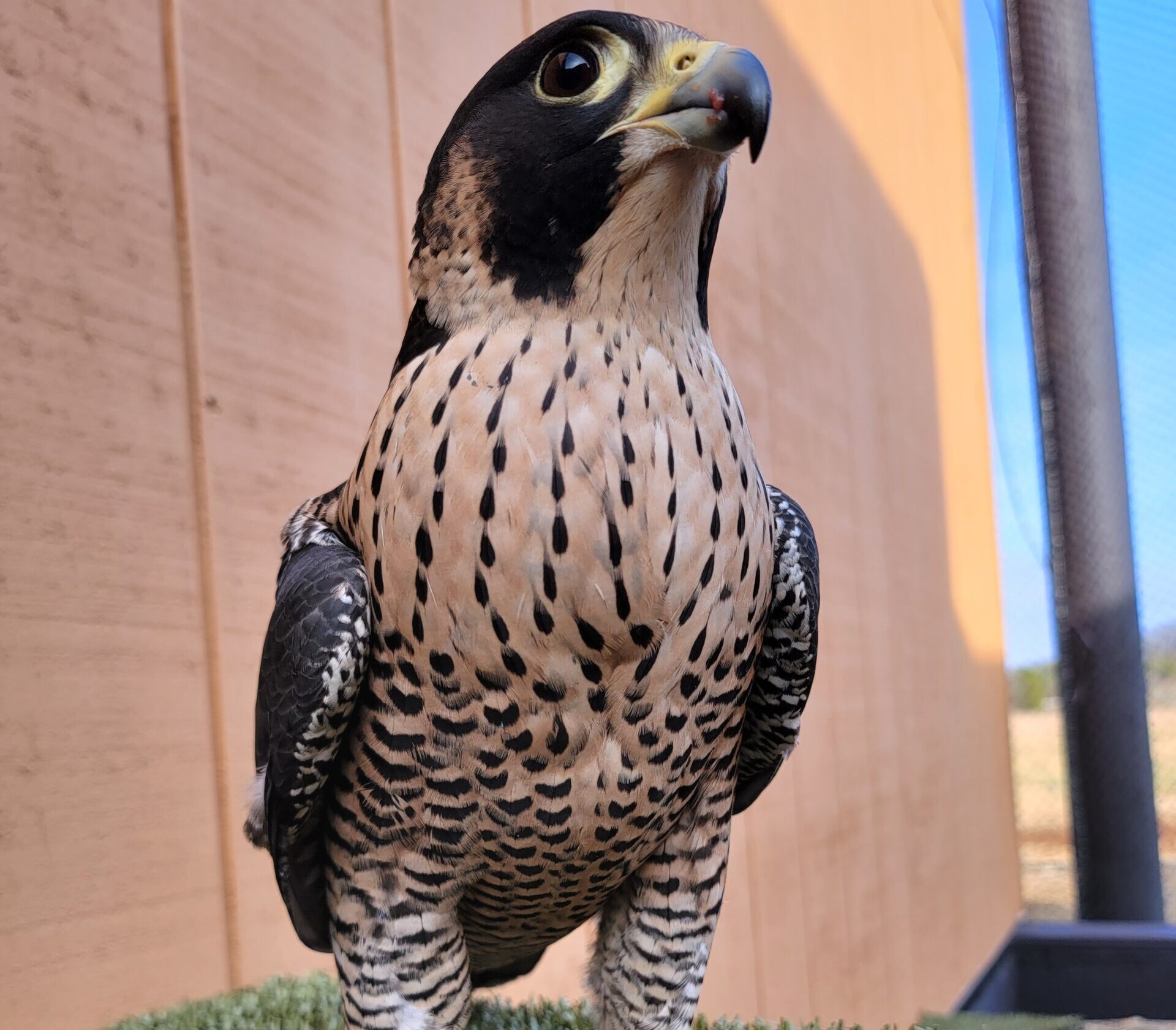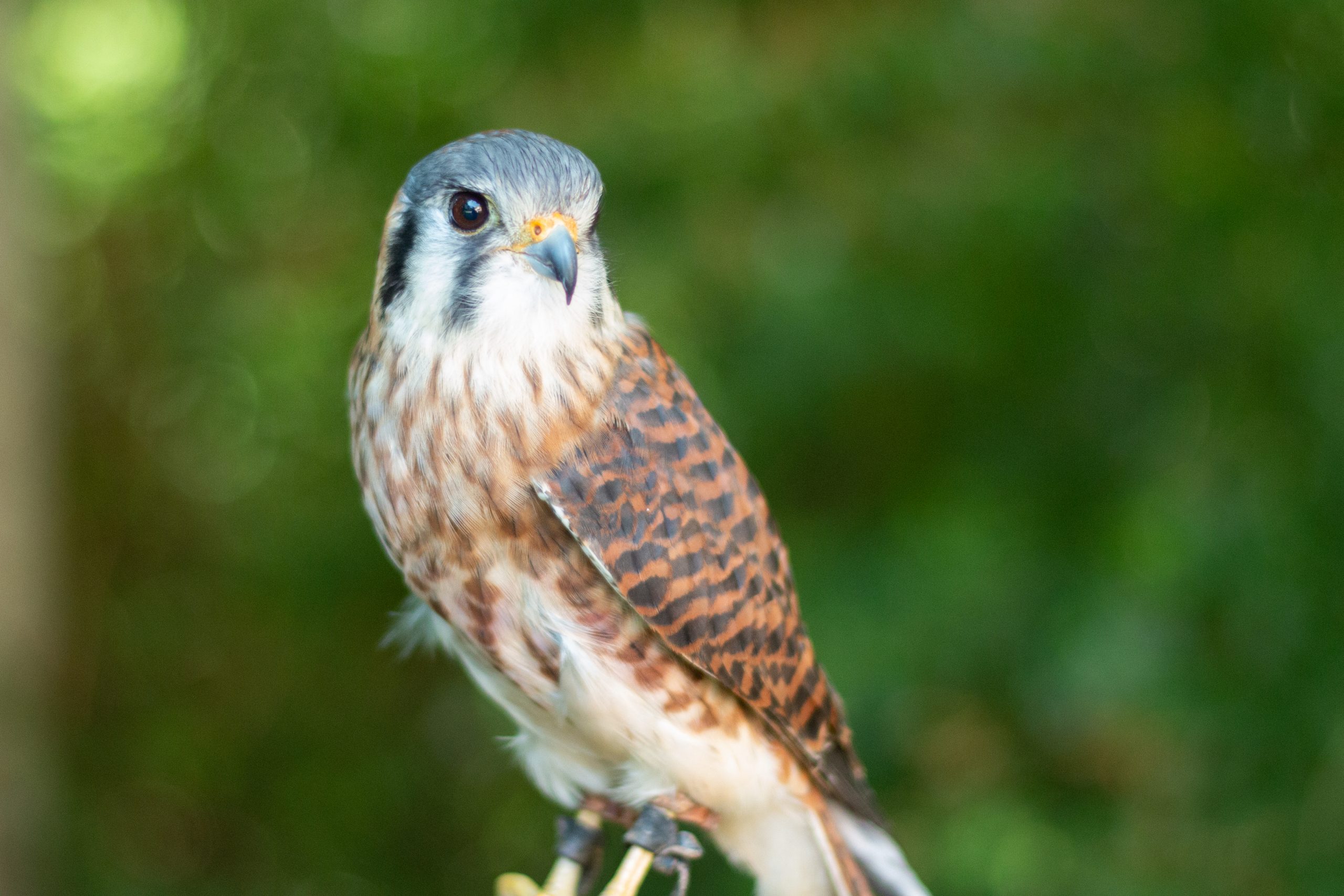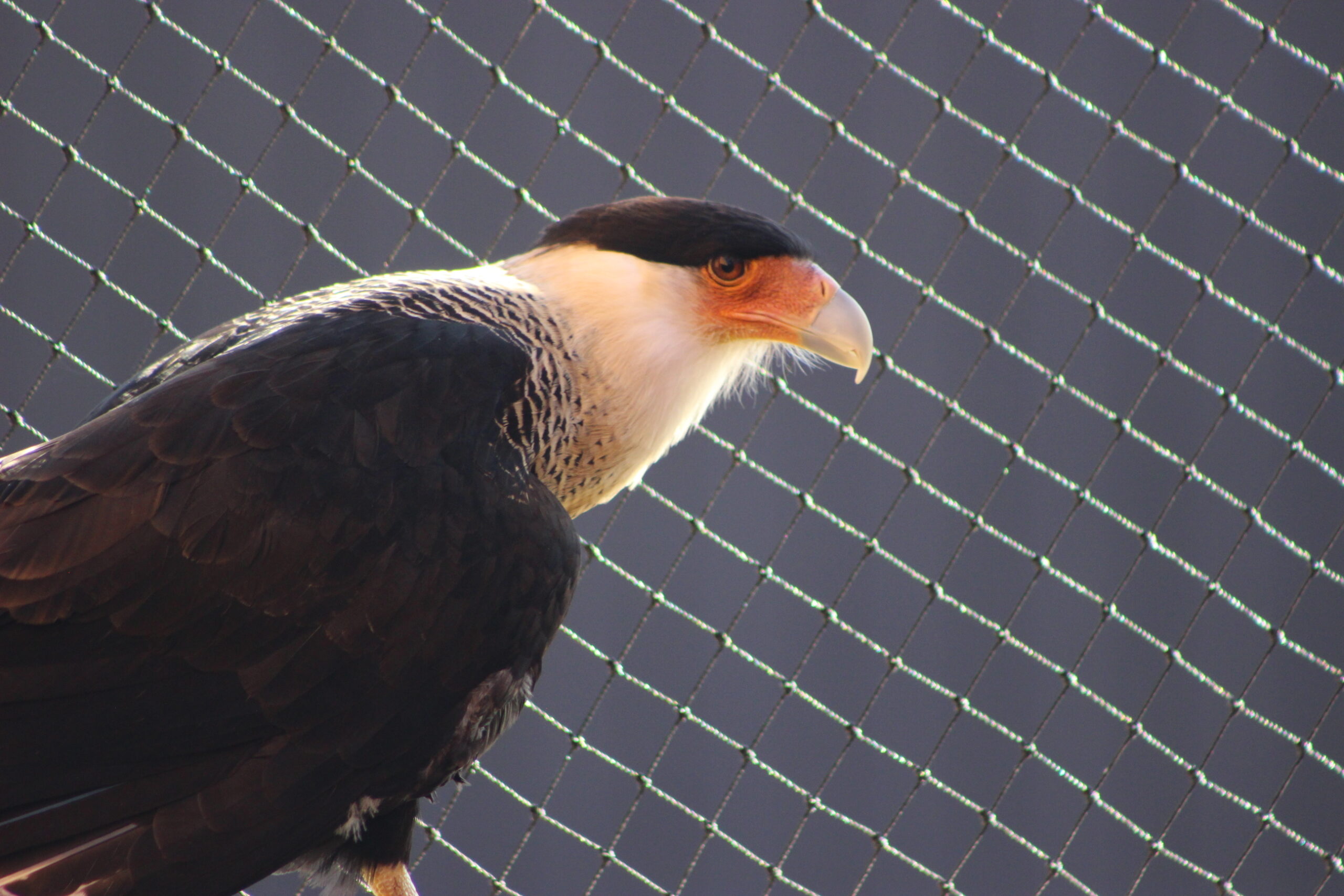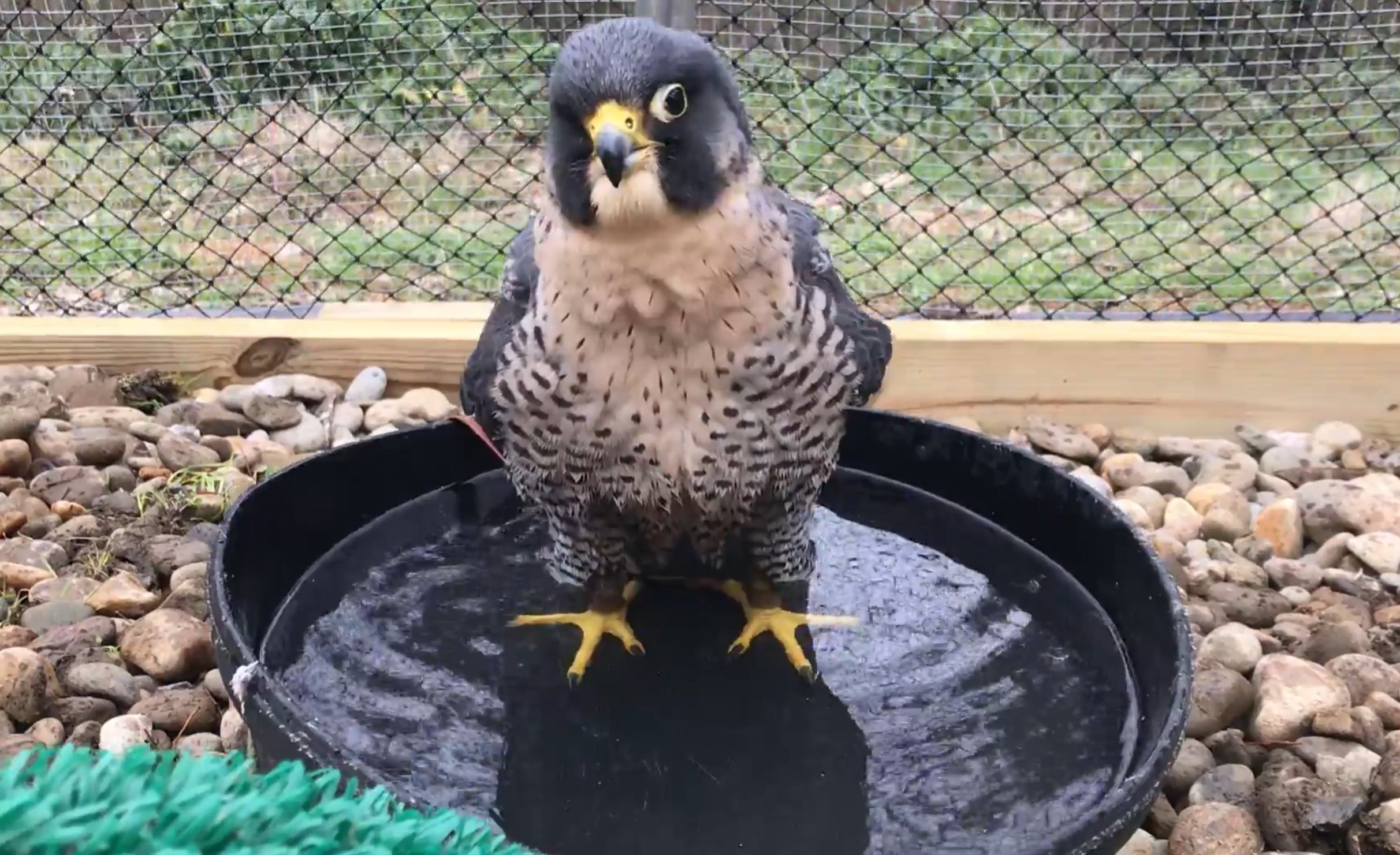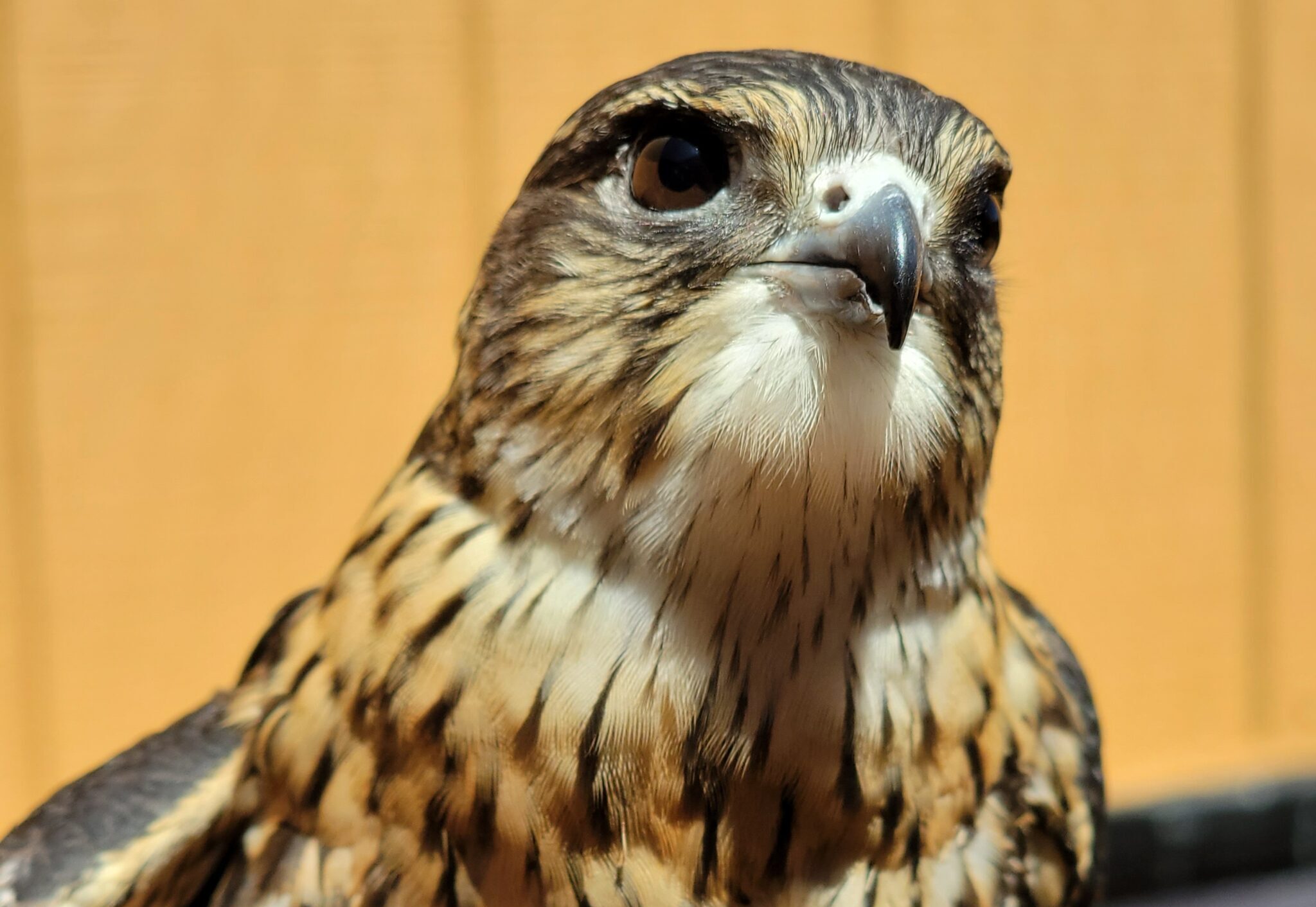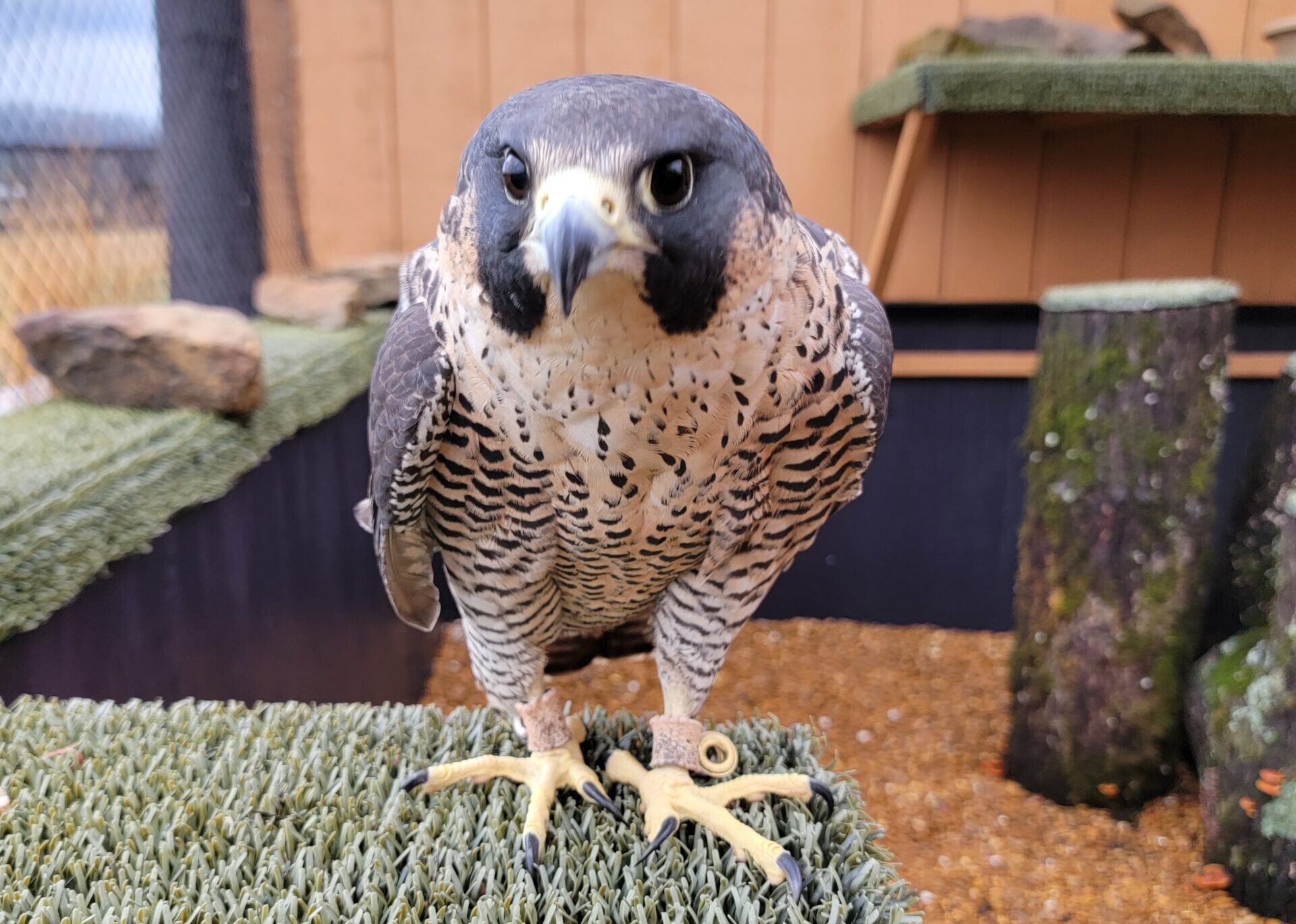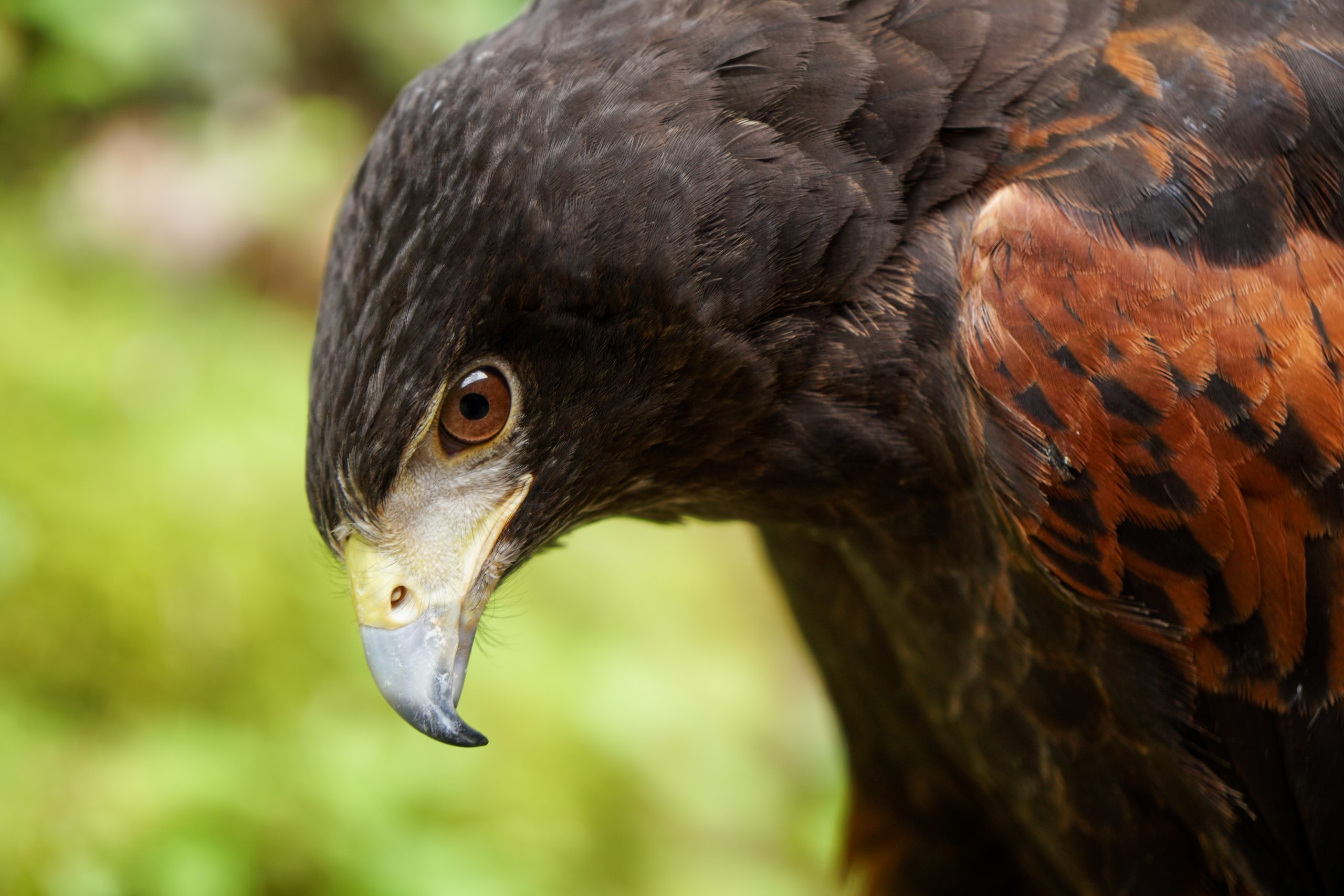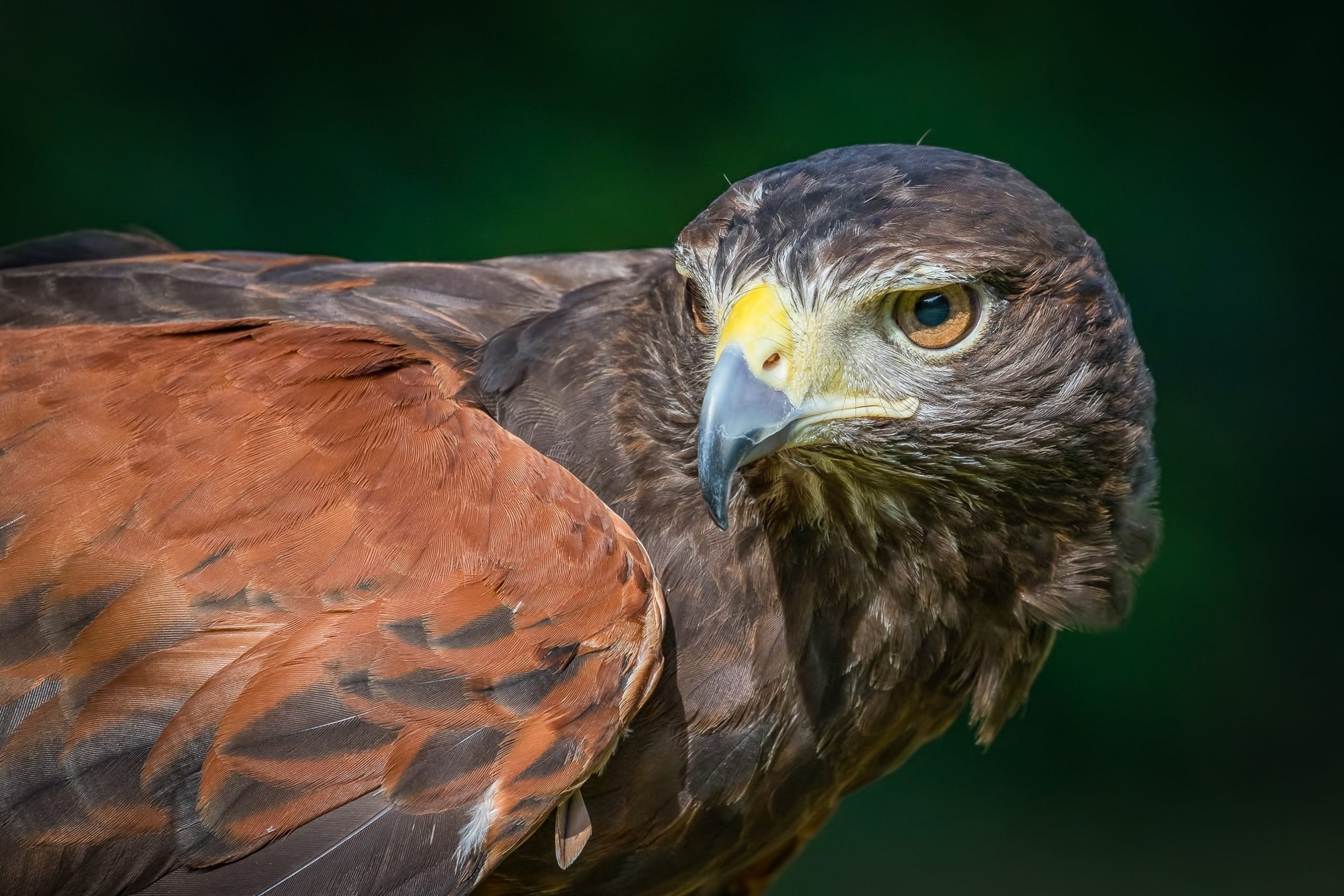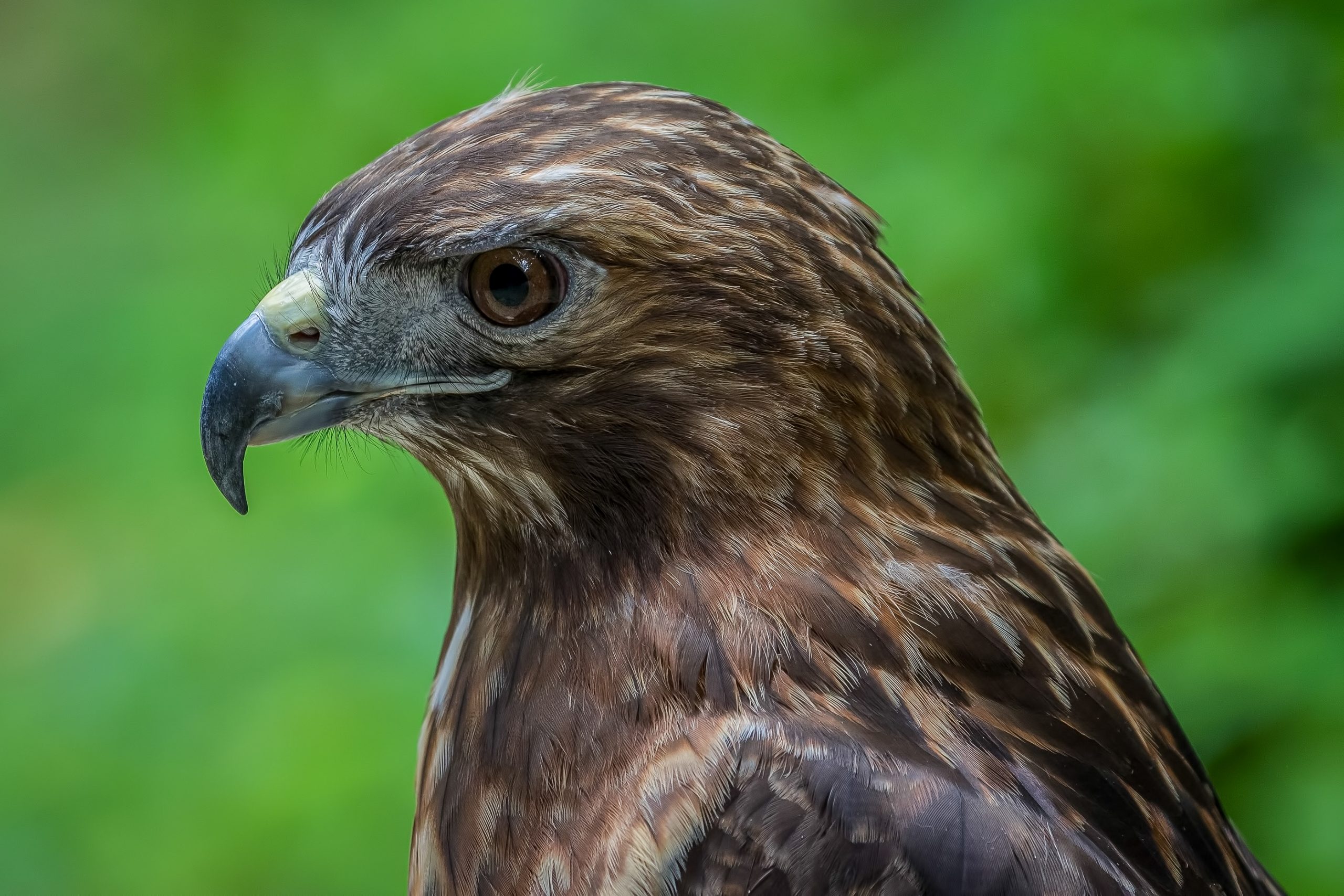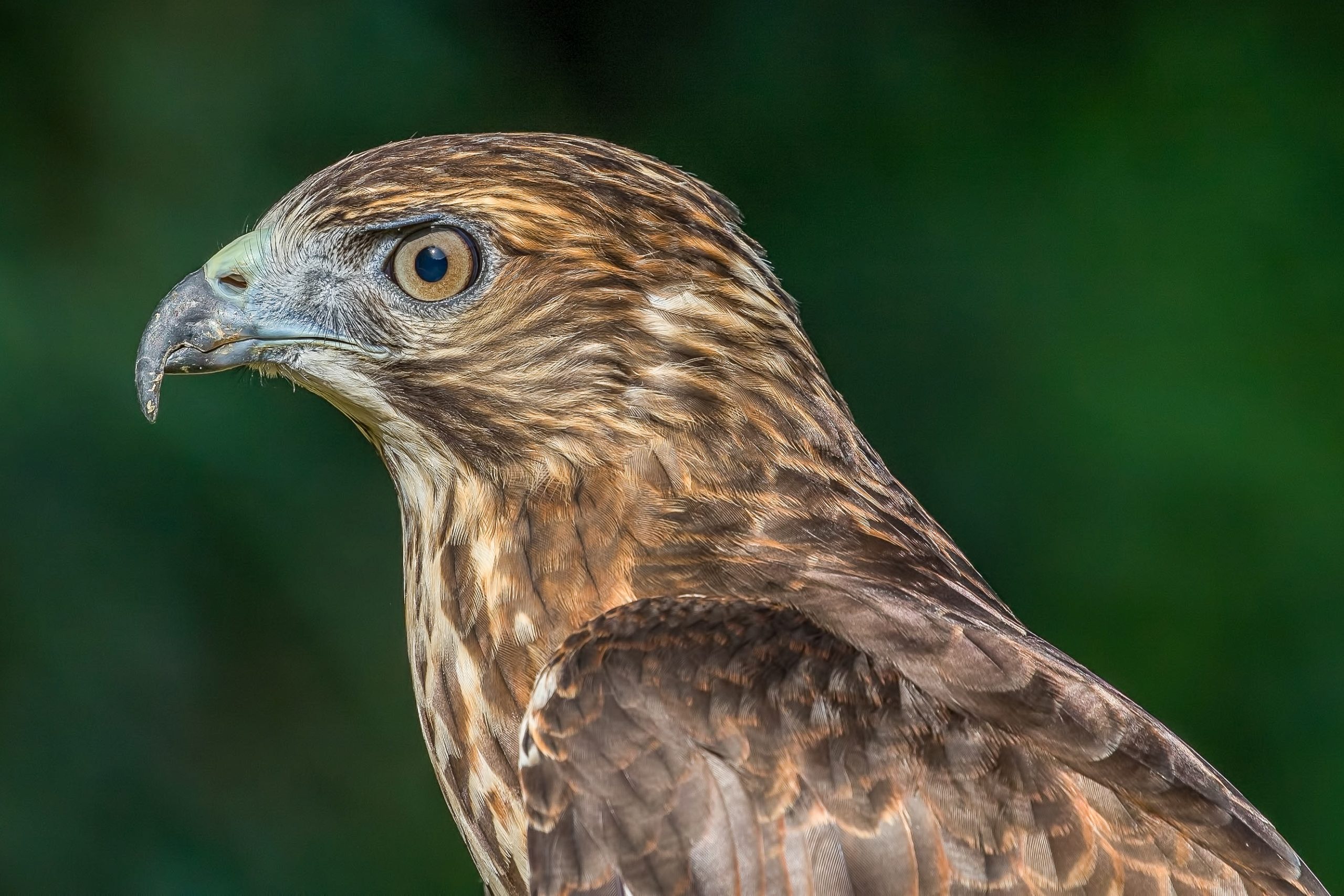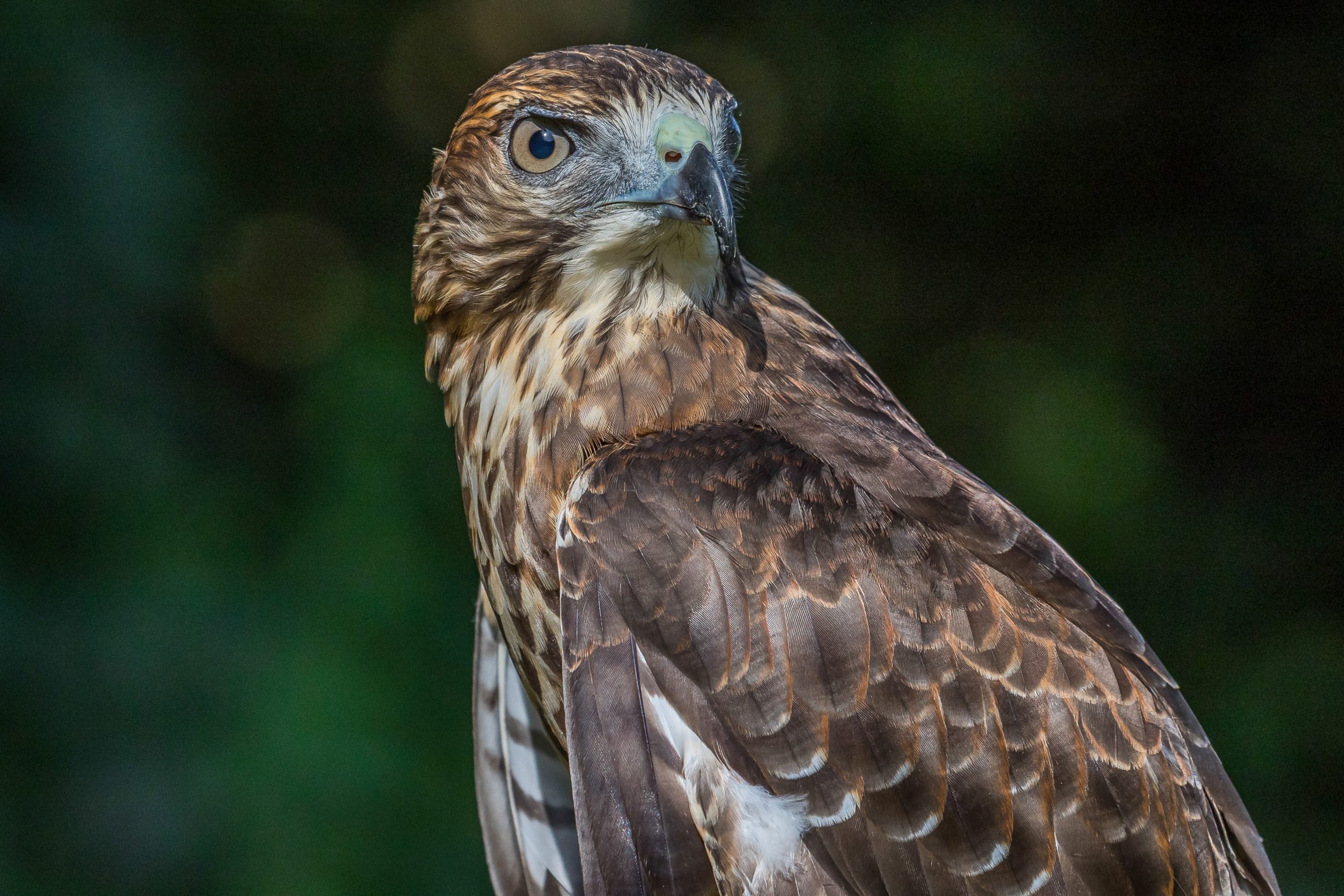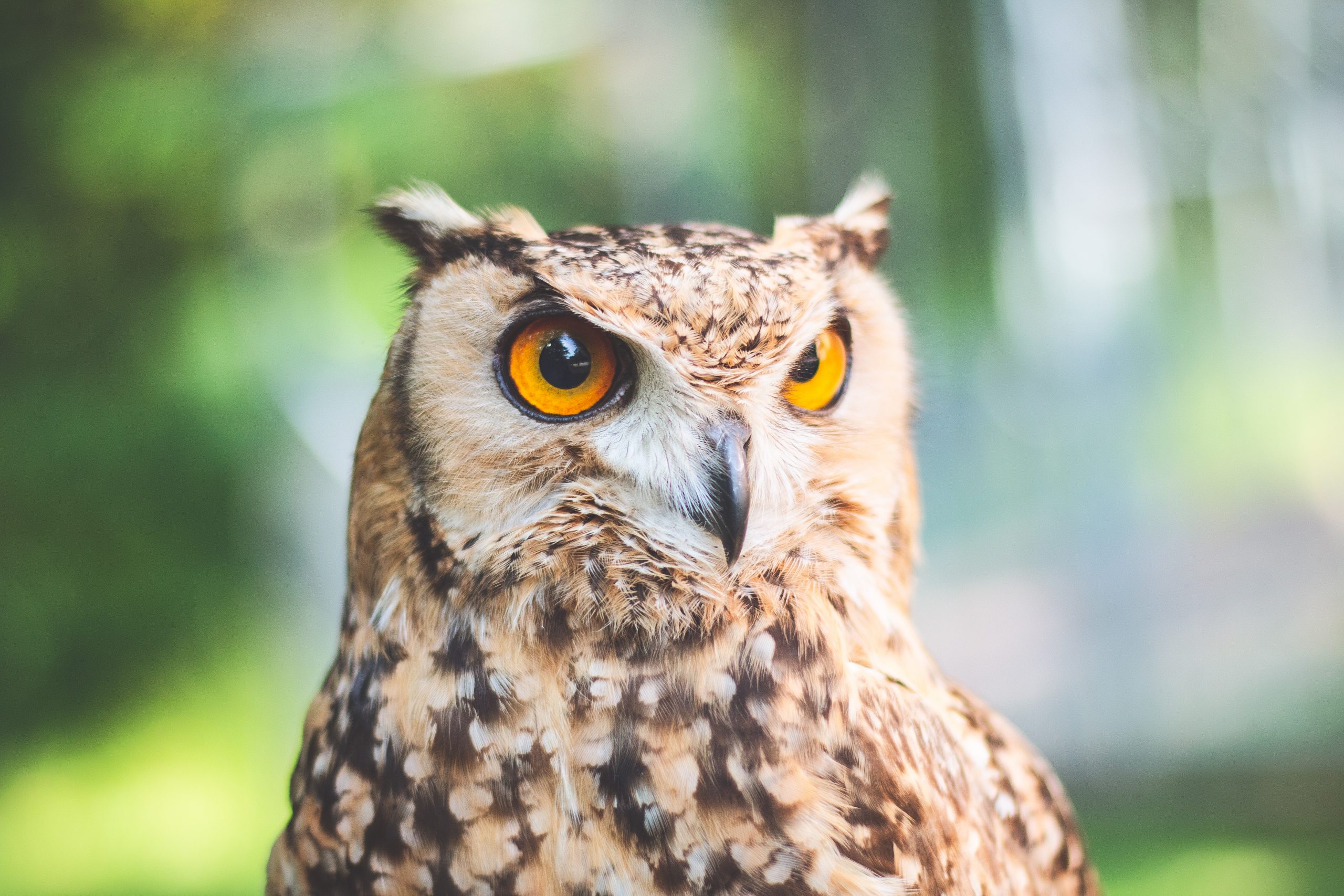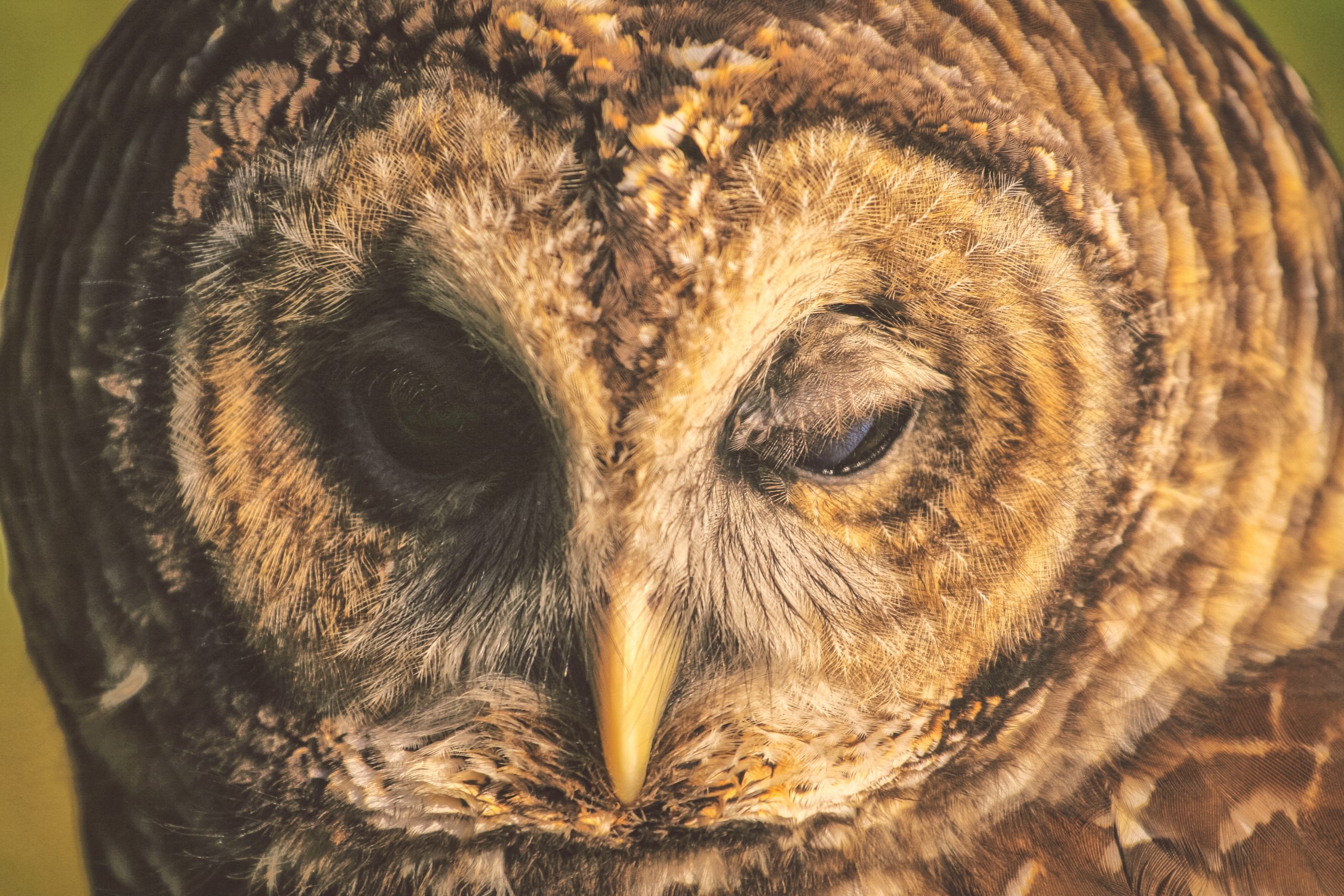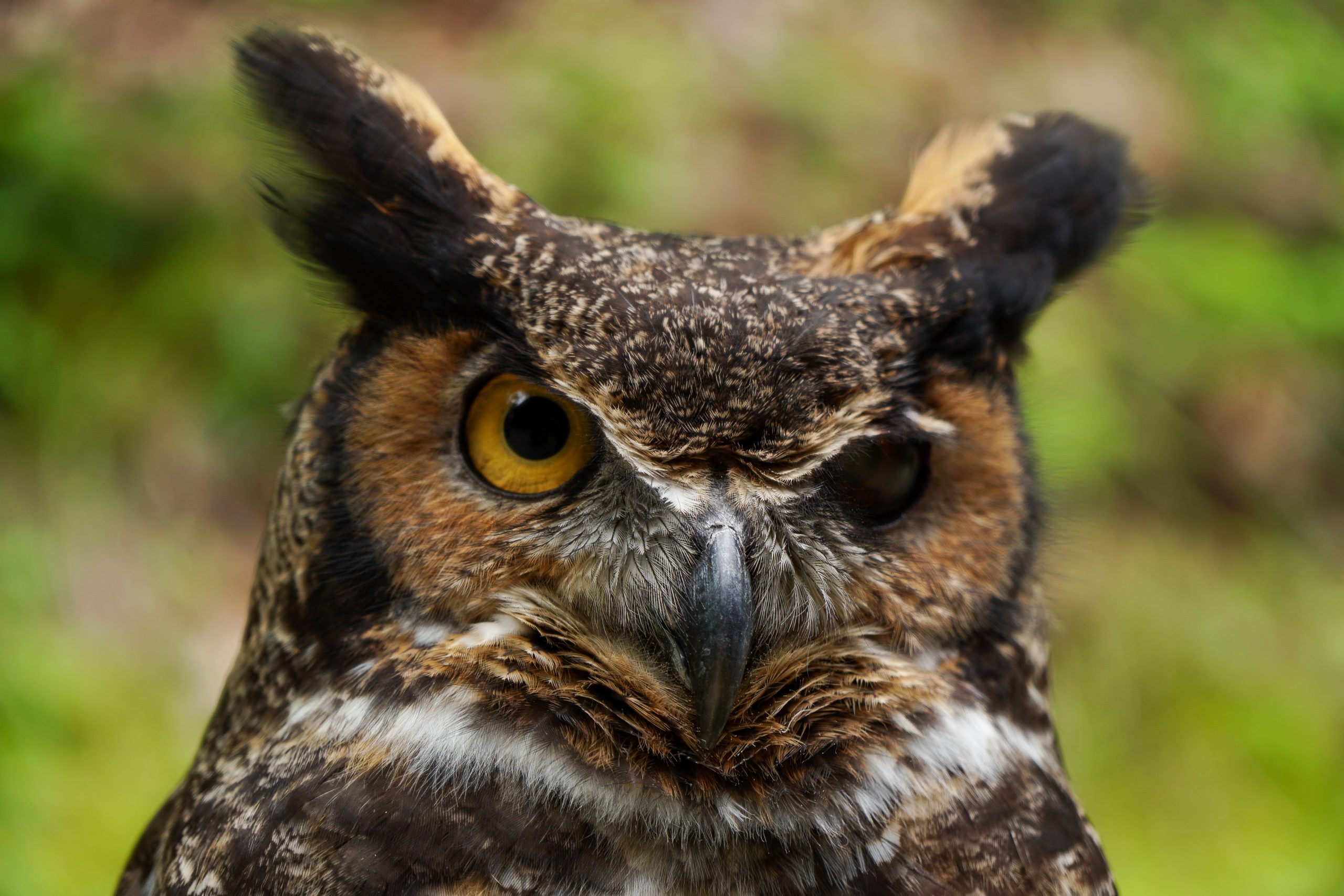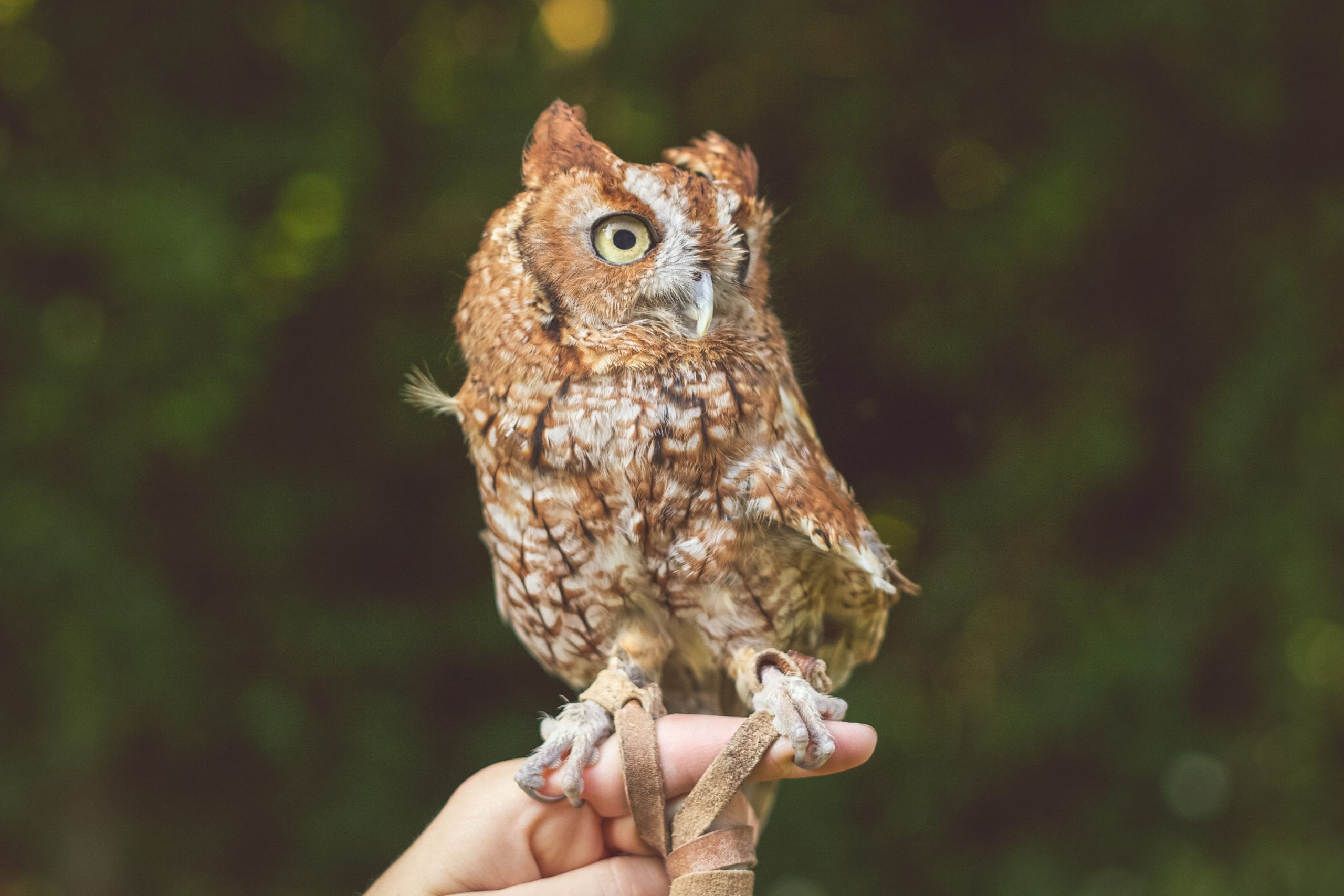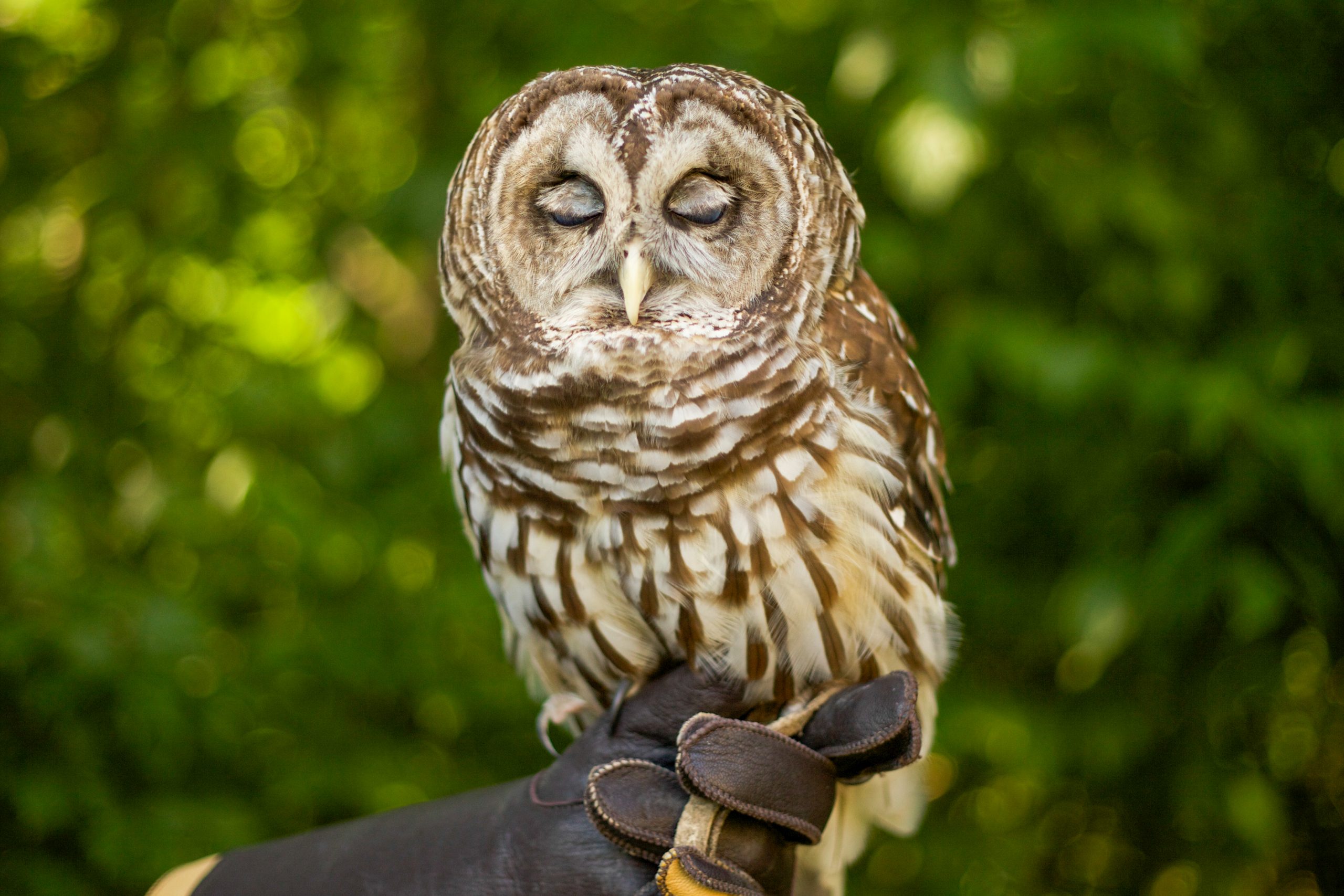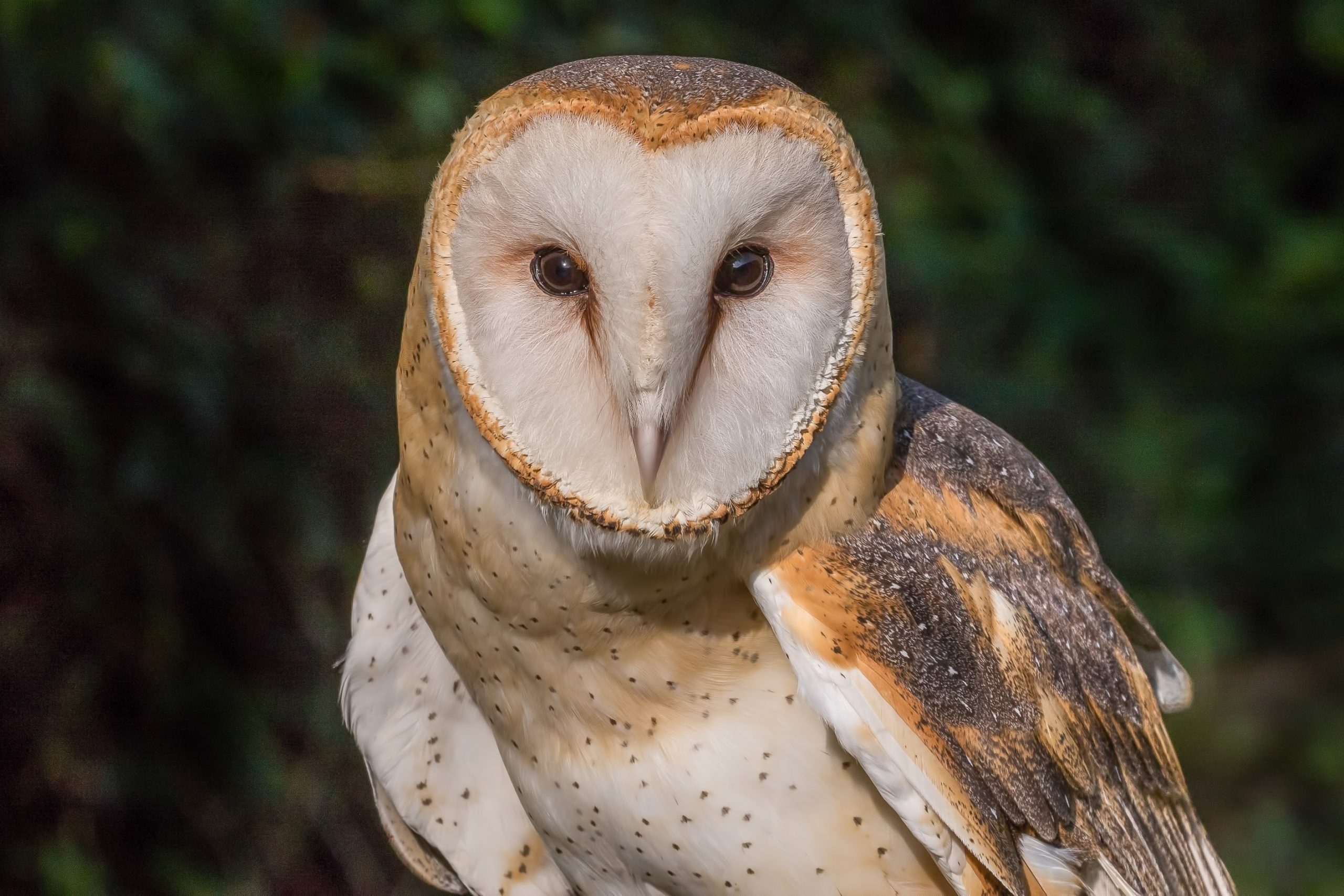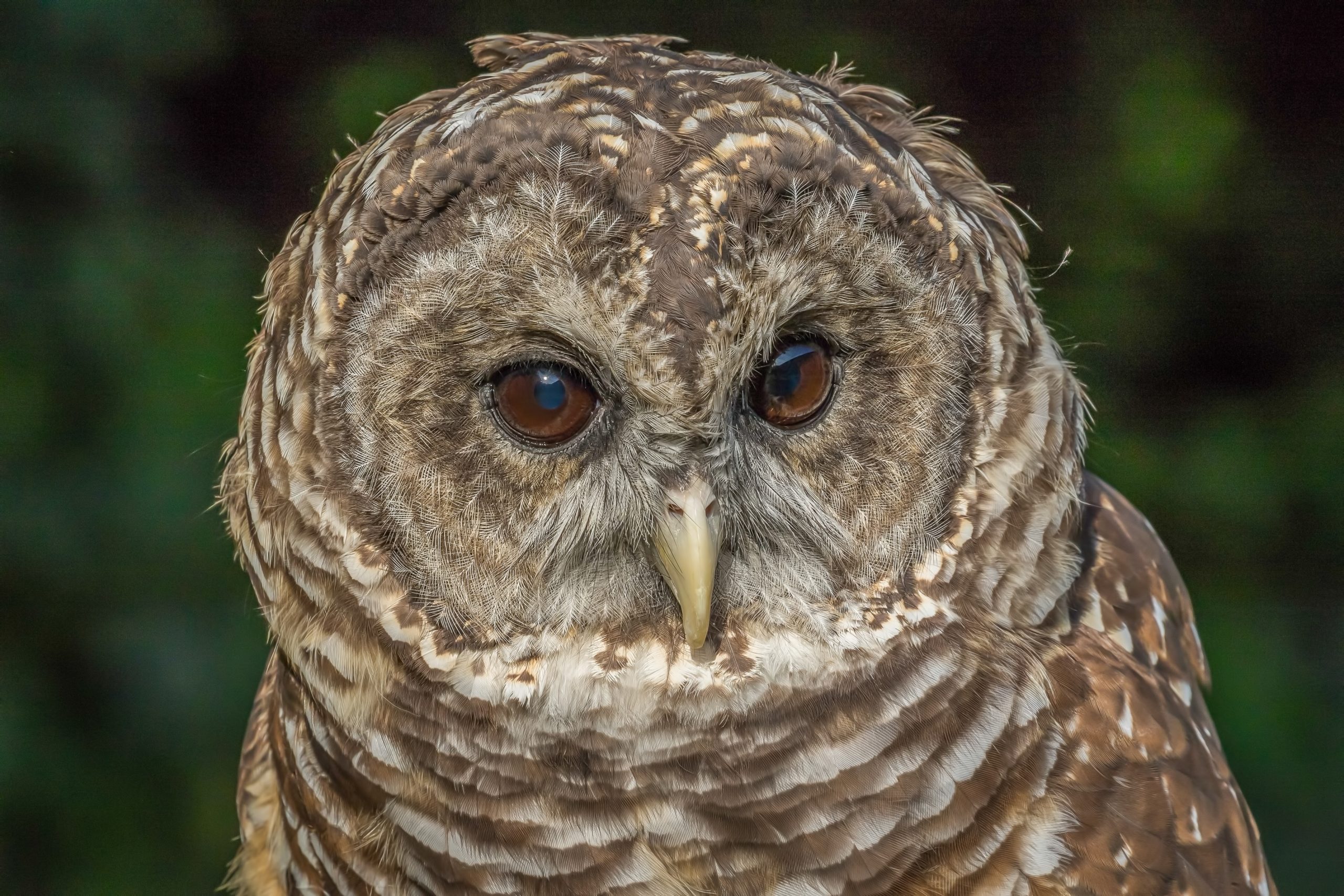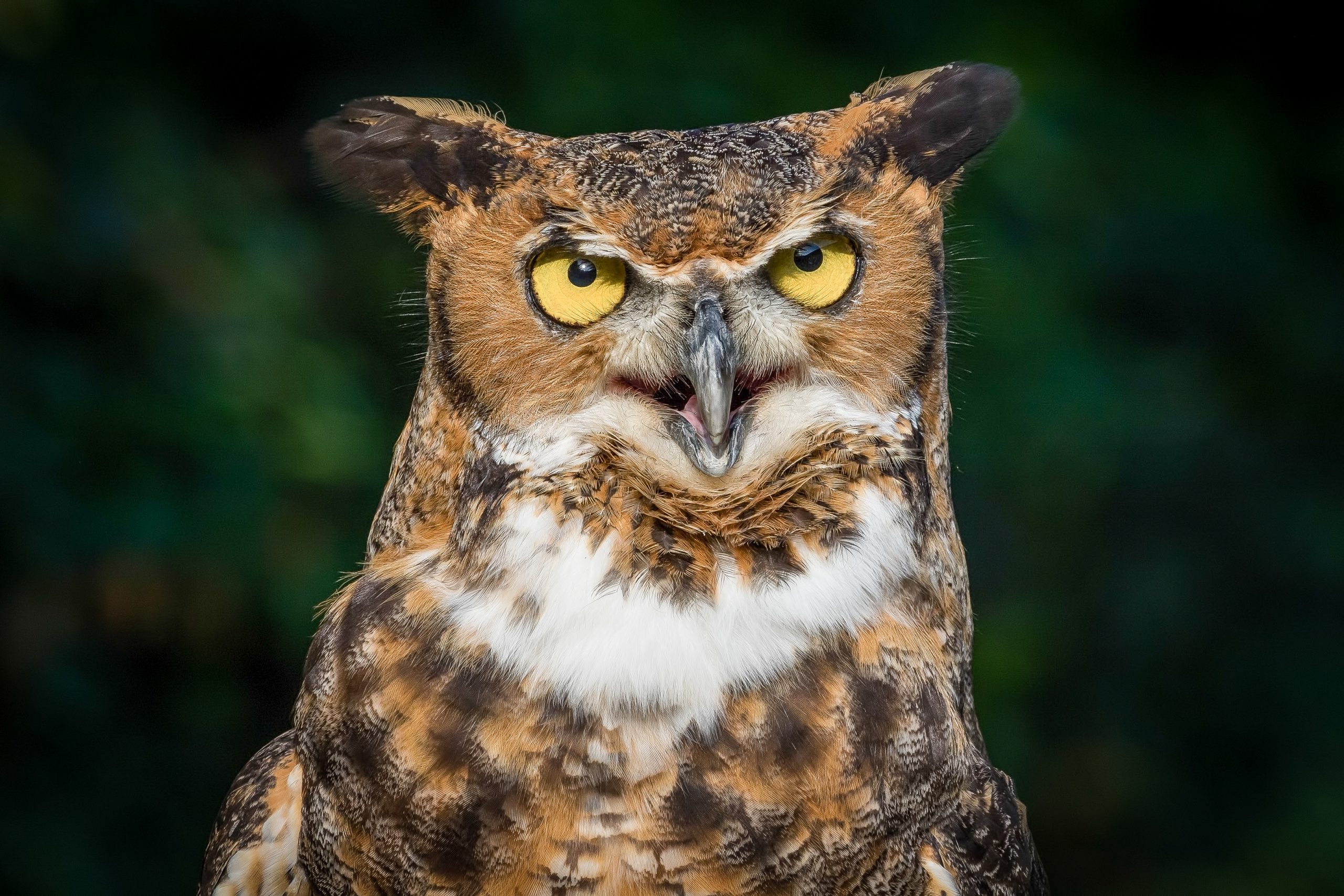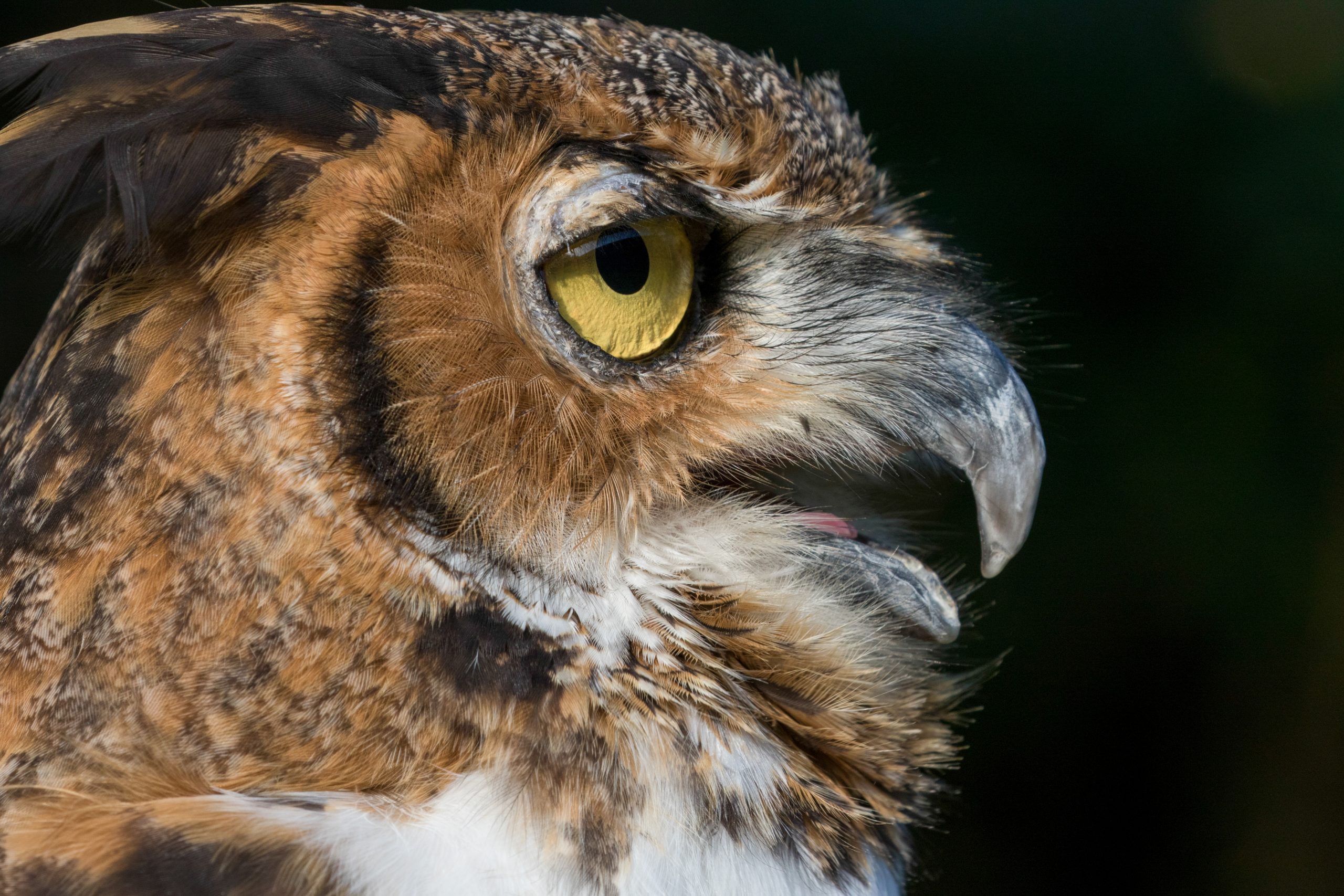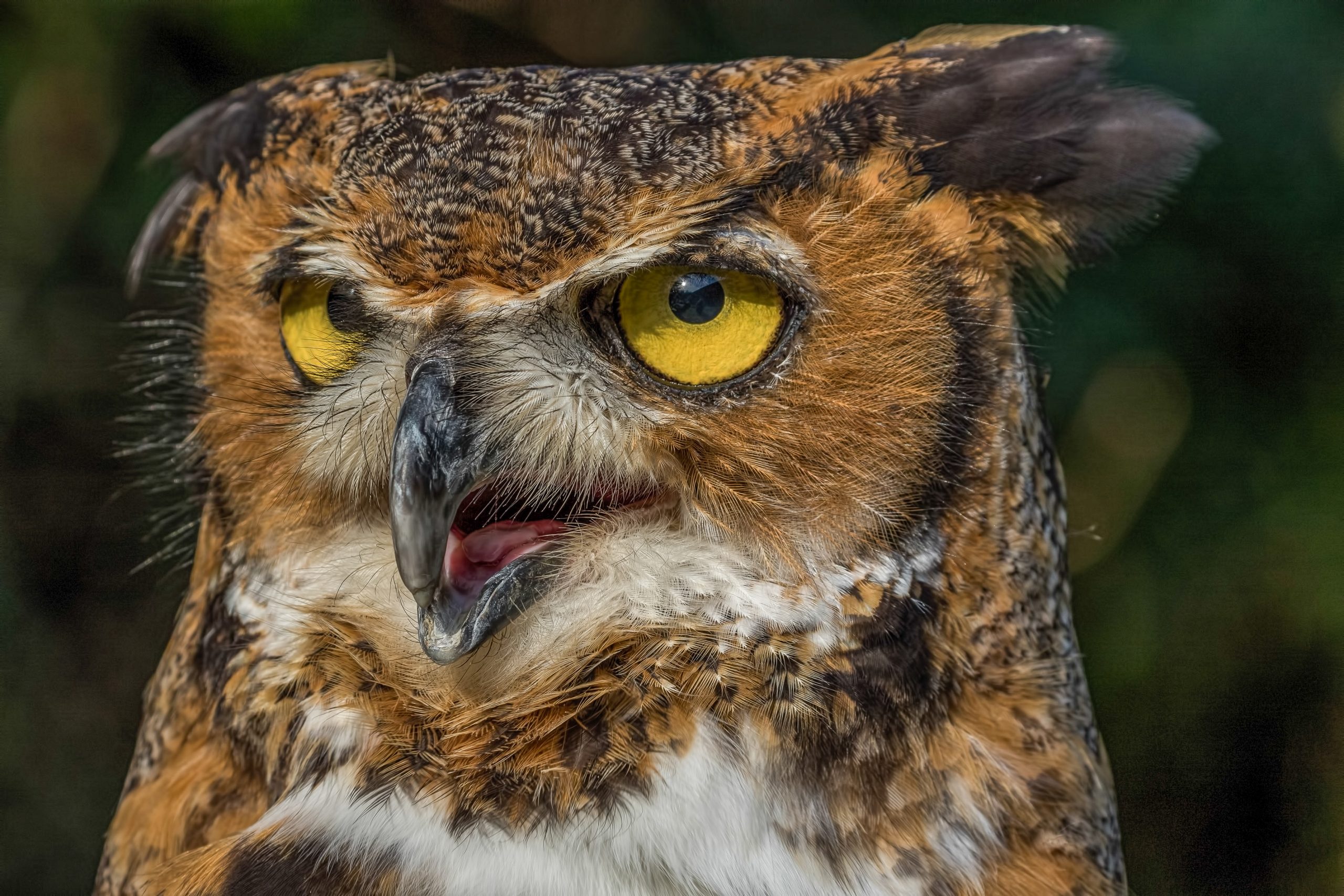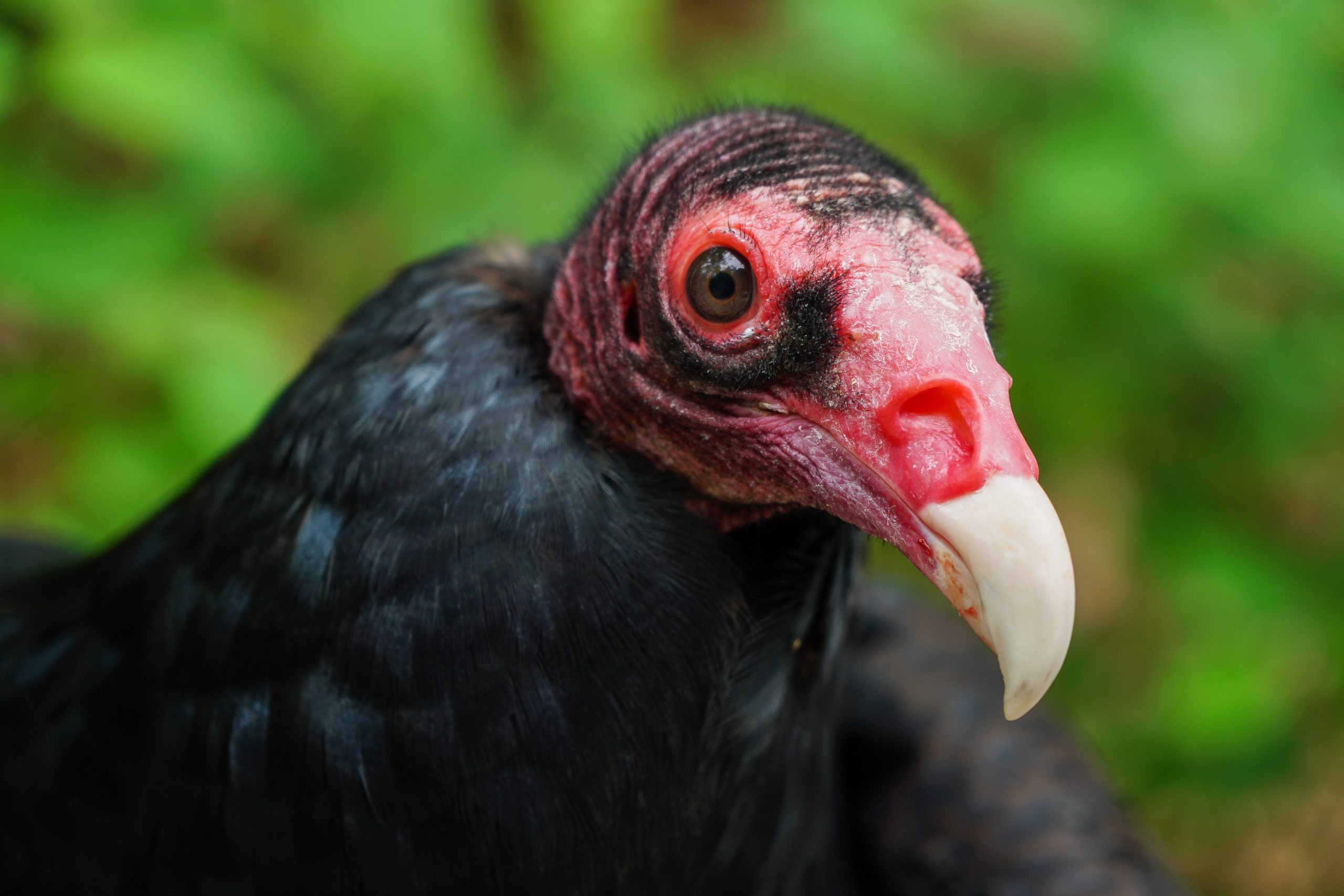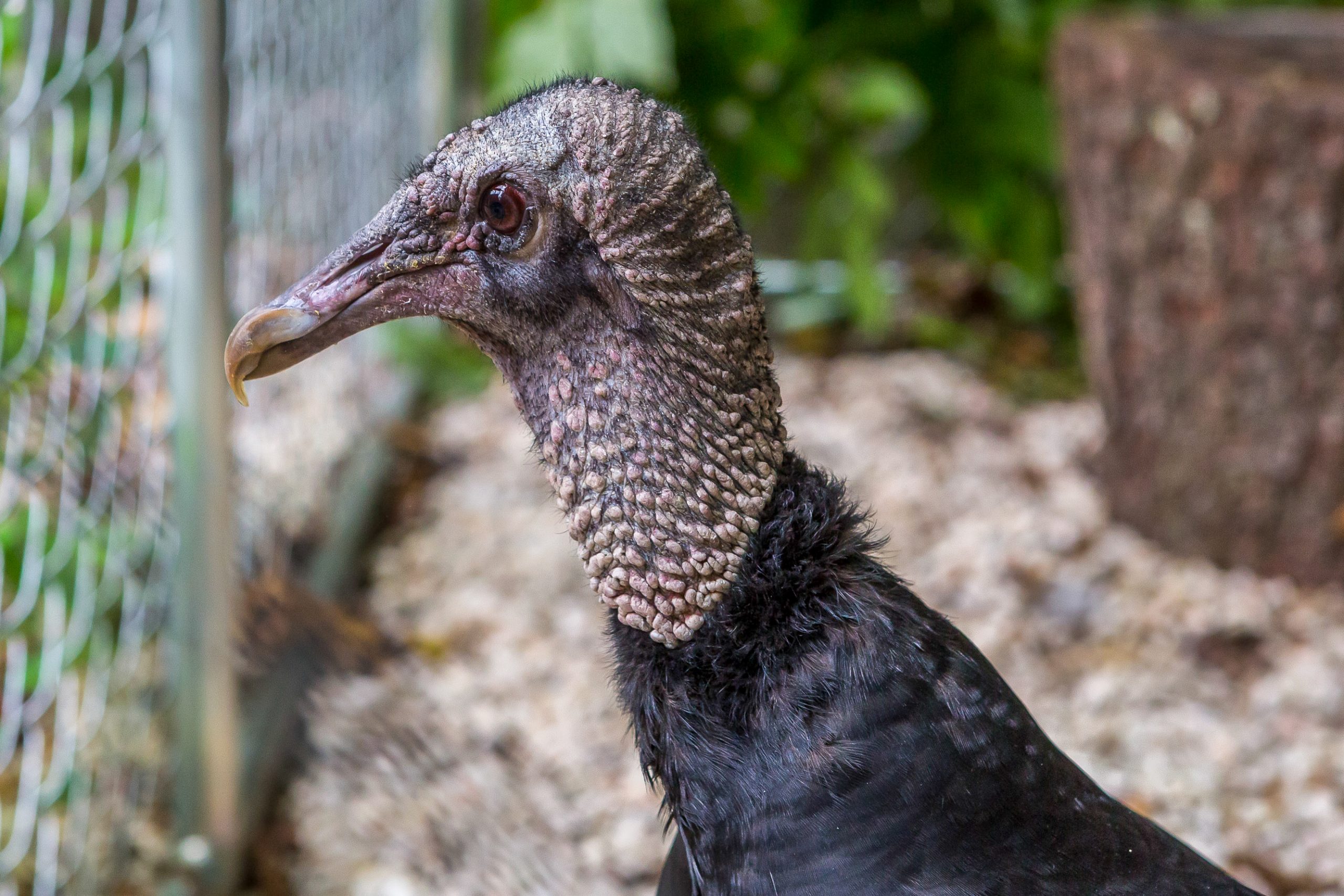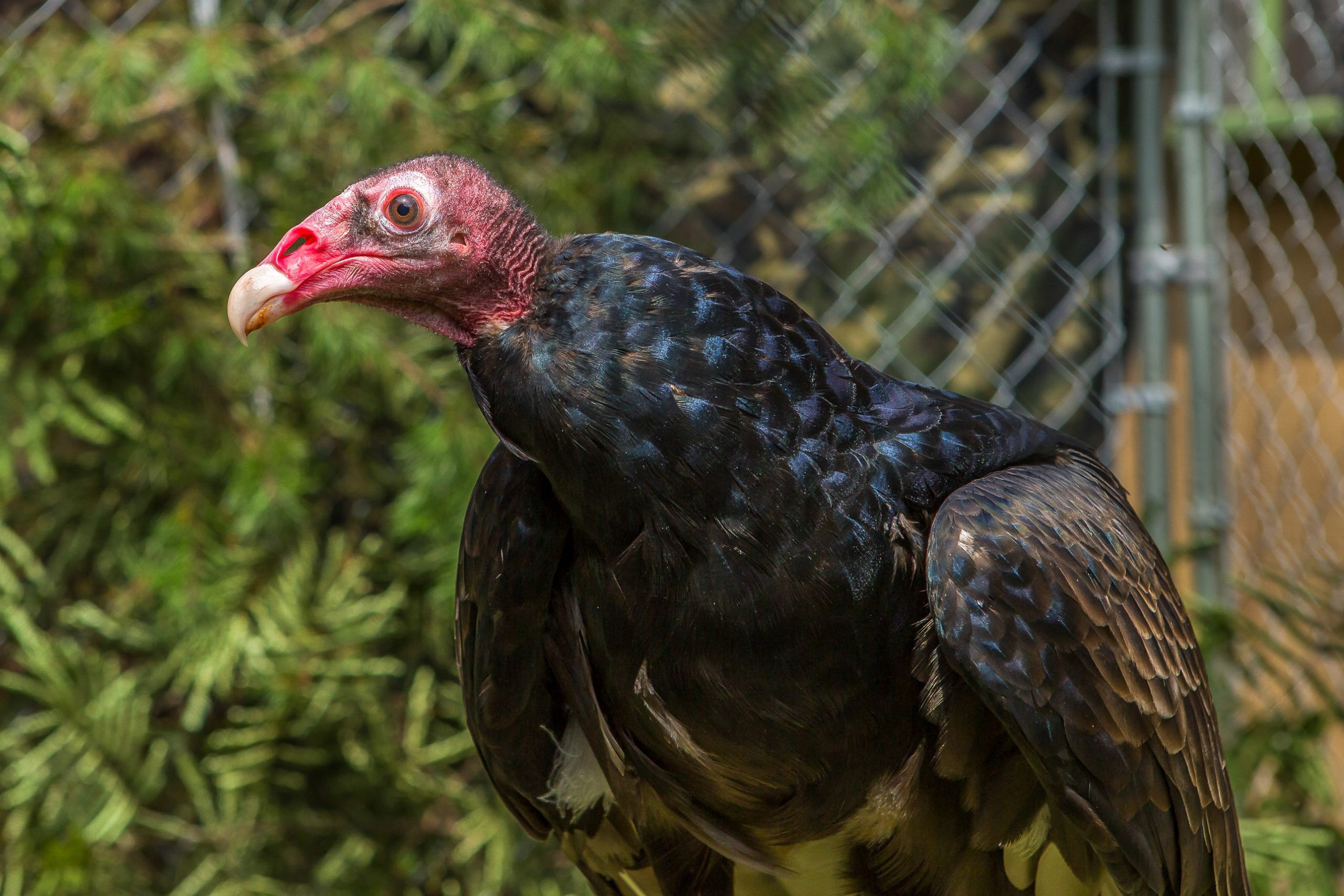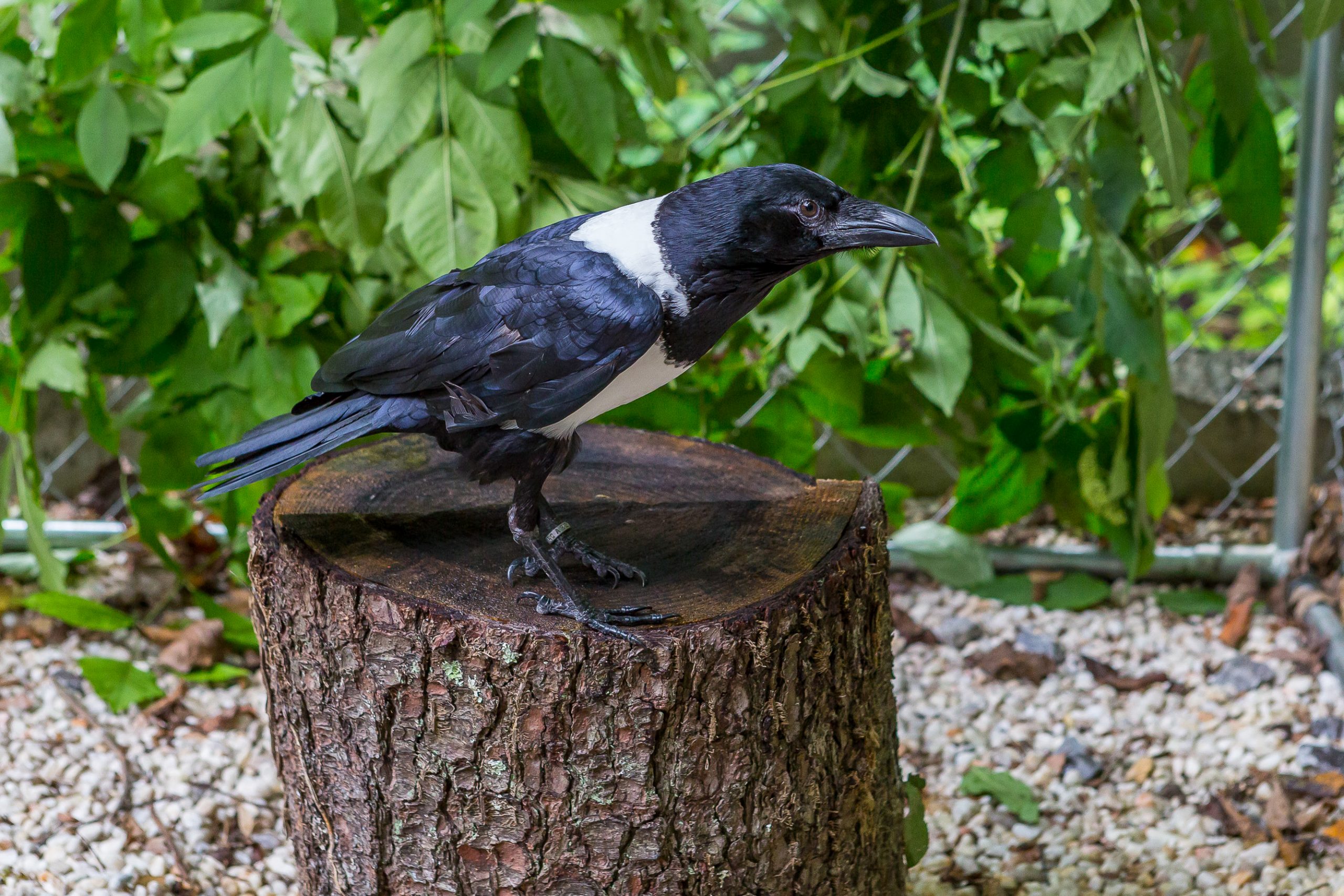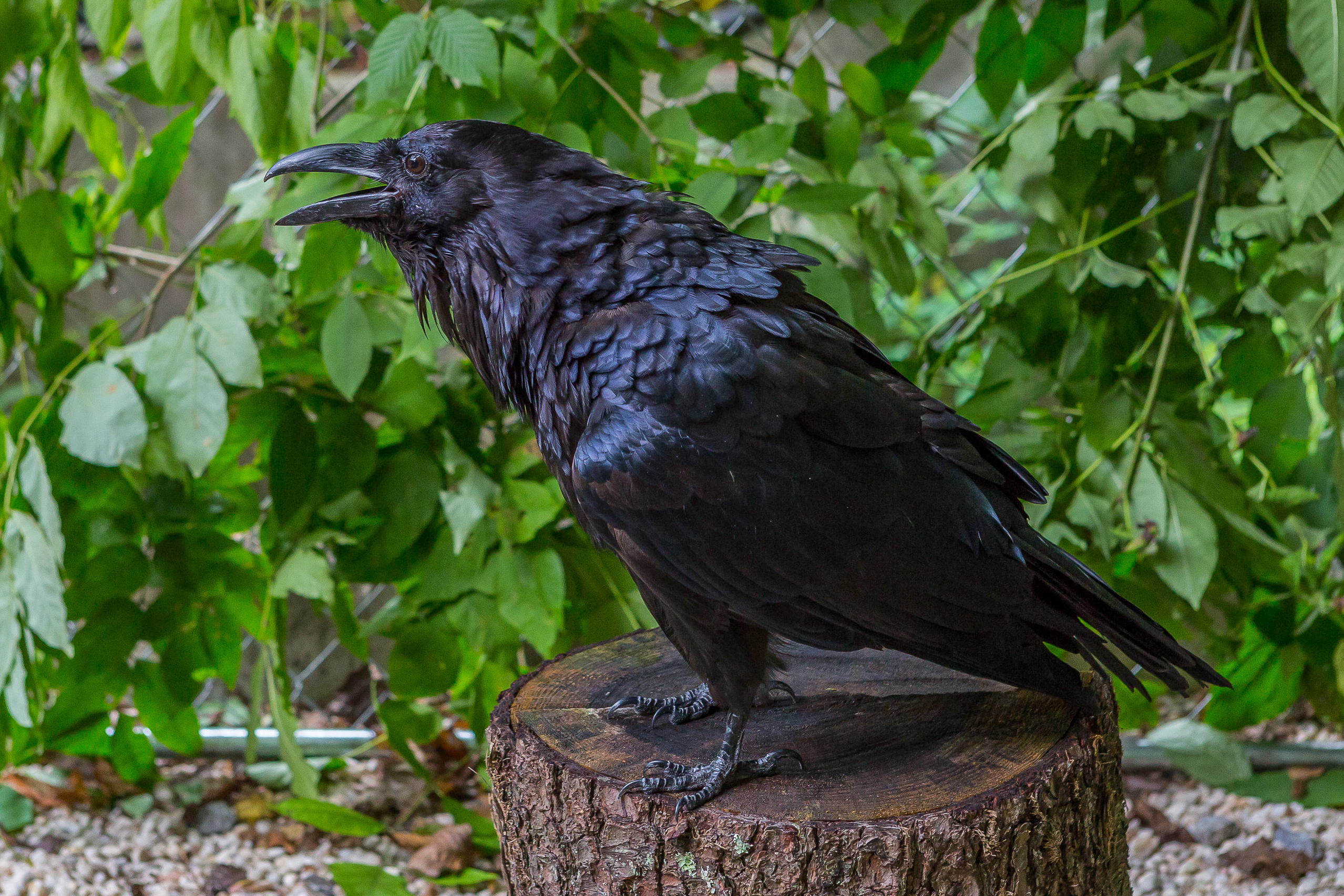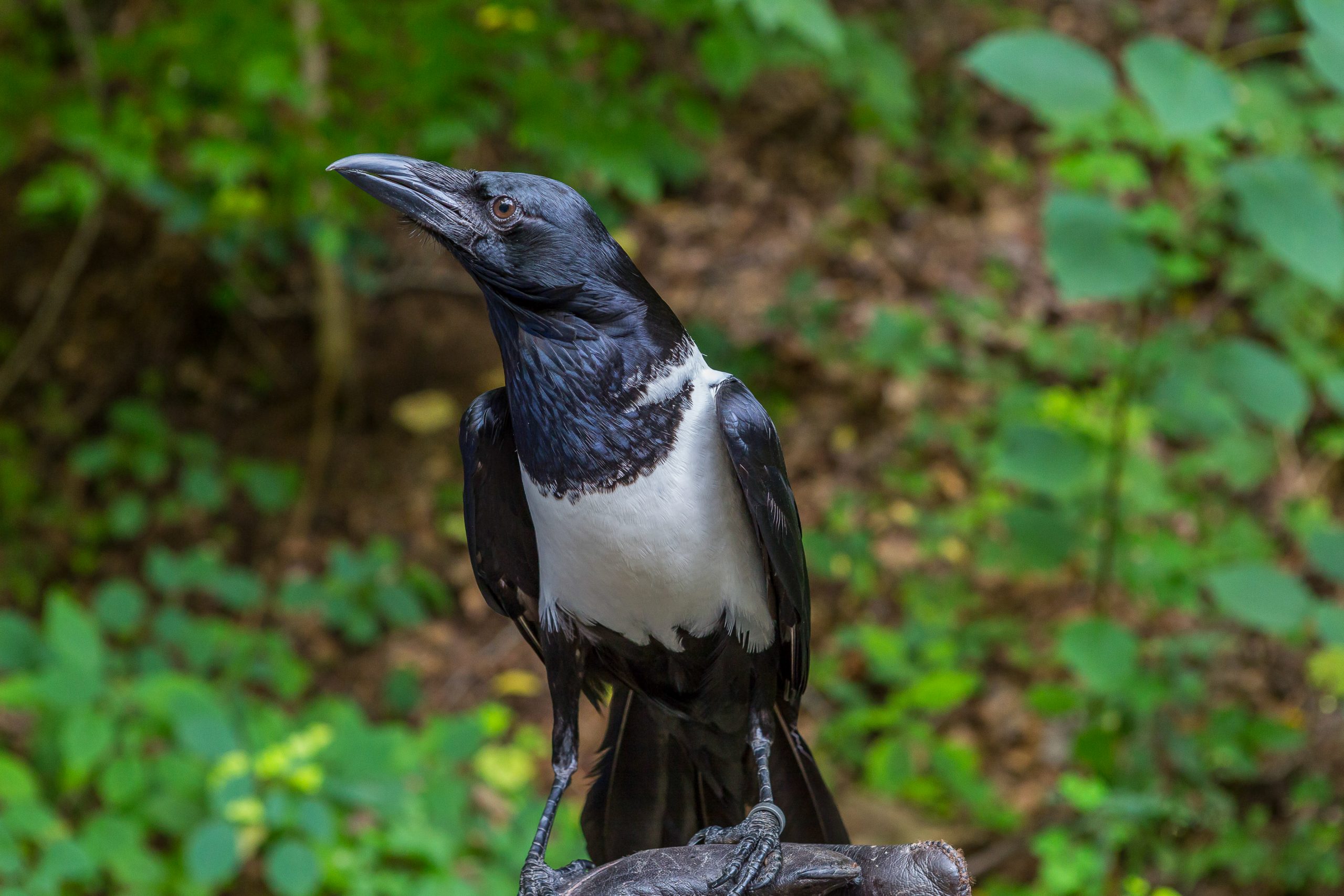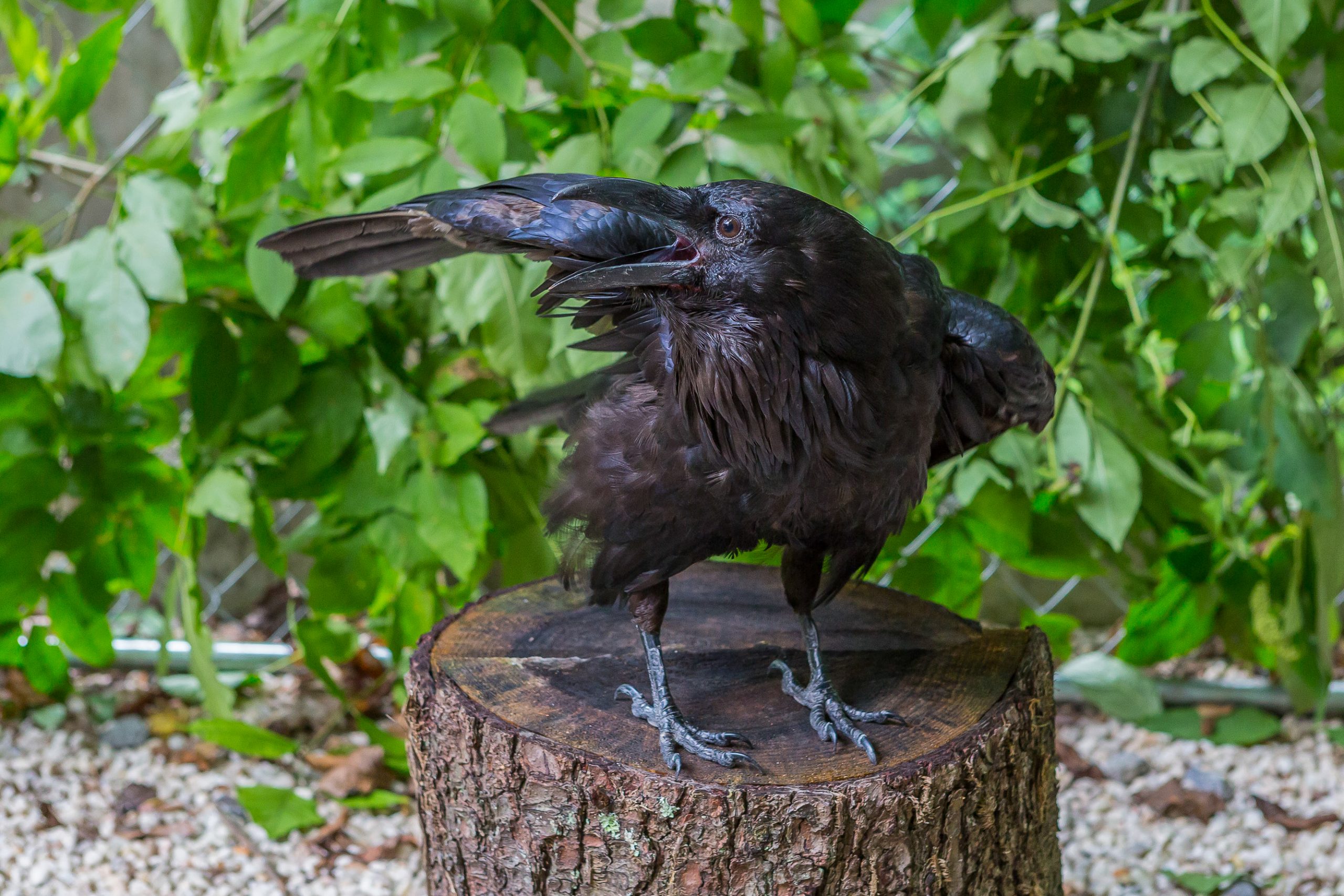American Eagle Foundation Birds
American Eagle Foundation takes care of LOTS of different birds! Select a category below to learn more!
Bald Eagles
Bald Eagles were placed at the center of the Great Seal of the United States in 1782! Since then, they have served as the pride of America’s skies and the symbol of all that America stands for. Bald Eagles obviously aren’t bald! “Bald” in this sense refers to an Middle English word that means “white headed.” When eagles fledge the nest at between 10 and 13 weeks of age, they are primarily all brown. An Eagle gets its full white head and tail feathers and yellow beak and eyes at around four to five years of age. Bald Eagles typically mate for life. Usually, they will only look for a new mate if their faithful companion dies, but sometimes a new mate is chosen in a territorial fight over a nest.
Golden Eagles
The Golden Eagle gets its name from the beautiful golden colored feathers found on the back of its head and neck. They are the most common type of eagle found on every continent in the northern hemisphere. A strong and powerful flyer, they delight in soaring through gale force winds and have been known to climb thermal updrafts up to four miles high. Most Golden Eagles do not establish a nesting territory until they are at least four years old. Once an individual establishes a territory, it tends to remain there during the nesting season, defending from other eagles. Their territory generally ranges from 10-15 miles, but that can be substantially smaller or larger depending on region, habitat quality and prey availability. Recent research suggests that some eagle populations are stable or even increasing, but most North American nesting populations are declining or below carrying capacity due, in part, to environmental change.
Falcons
Falcons are small to medium-sized, diurnal—or day-time hunting—birds of prey in the genus Falco, and they come in a wide variety of shapes, colors, and sizes! North American falcons can weigh anywhere from 2.8 ounces to 4.5 lbs. There are about 40 species of falcon worldwide, there are 7 in North America and at least 3 species of falcon found in Tennessee. Falcons are especially skilled hunters that have hooked beaks and talons, or sharp claws, with which they catch and eat their prey. They aren’t picky eaters and will eat prey like mammals (including rodents), other birds, insects, amphibians, and reptiles.
Hawks
Hawk is a general term used to describe a large group of diurnal (active during the day) that are strong and powerful predatory birds. All hawks have certain basic similarities such as keen eyesight, hooked beaks and taloned feet, a wide variety of sizes exists among them. Their sense of hearing is excellent, and their eyesight is even better. Hawks are sexually dimorphic meaning the females are larger than the males, this size difference is often considerable.
While most hawks mate for life, if one partner passes away, the other will promptly seek a new mate. Some pairs stay together throughout the year, while others may part ways after the breeding season. Despite migration or dispersal, the loyalty to the breeding site remains strong, with many returning to the same nesting territory and reuniting with the same partner annually.
American Eagle Foundation takes care of a number of different species of Hawks, such as red-tailed hawks, red-shouldered hawks, Swainson’s Hawks, and Harris’s hawks.
Owls
While some owl species are active during the day, the majority hunt at night, making them rarely seen by humans. Due to their nocturnal nature, owls remain mysterious and misunderstood, even though some owls coexist closely with humans throughout their lives.
Owls rely on their exceptional vision and acute hearing to hunt at night. Their unique features, such as broad wings, light bodies, and soft, noiseless feathers, enable them to fly silently. When hunting, owls catch their prey, typically rodents or small mammals, with their strong feet. They either swallow small prey whole or tear apart larger prey using their sharp, hooked beaks. The owl’s digestive system processes the nutritious parts of the prey, while indigestible components like hair, bones, and teeth are regurgitated as pellets. These pellets, often discovered near nesting or roosting areas, can be analyzed to determine the owl’s diet. Owls can turn their heads almost all the way around (270 degrees). The reason they do this is because their eyes, unlike the eyes of humans, are locked in their sockets and are pointed straight ahead. They are capable of turning their heads so far because they have 14 vertebrae in their neck, double the amount that humans have.
In North America, there are a total of eighteen owl species.
Vultures
A vulture is a scavenging bird of prey. The New World vultures include the California condor and the Andean condor; the Old World vultures include the birds that are seen scavenging on carcasses of dead animals on African plains. Some traditional Old World vultures (including the bearded vulture) are not closely related to the others, which is why the vultures are to be subdivided into three taxa rather than two. New World vultures are found in North and South America; Old World vultures are native to Europe, Africa, and Asia, meaning that between the two groups, vultures are found on every continent except Australia and Antarctica (though Trigonoceps vultures have crossed the Wallace line). Vultures stomach acid is so effective that it is capable of neutralizing diseases like rabies, botulism, anthrax, and many more that might prove fatal to humans. Vultures are thought to have the strongest immune system of any vertebrate (Zepeda et al., 2018). Other less-efficient scavengers—like feral dogs—may contribute to the spread of disease, but vultures are a dead-end for pathogens.
Corvids
Corvids, such as crows, ravens, and jays, belong to the family Corvidae and are among the largest birds in the passerine order. These birds have robust feet and beaks, their beaks are designed to crack open tough foods like nuts or clams, aided by a unique structure in the lower jaw that helps brace it against the skull, allowing them to use their jaw like a chisel.
Known for their intelligence and social nature, Ravens and magpies are able to recognize objects, problem solve, and even have the ability to recognize individuals based on their interactions and experiences with them.
Corvids thrive in various environments worldwide, ranging from Arctic tundra and dry deserts to urban settings and tropical rainforests.

